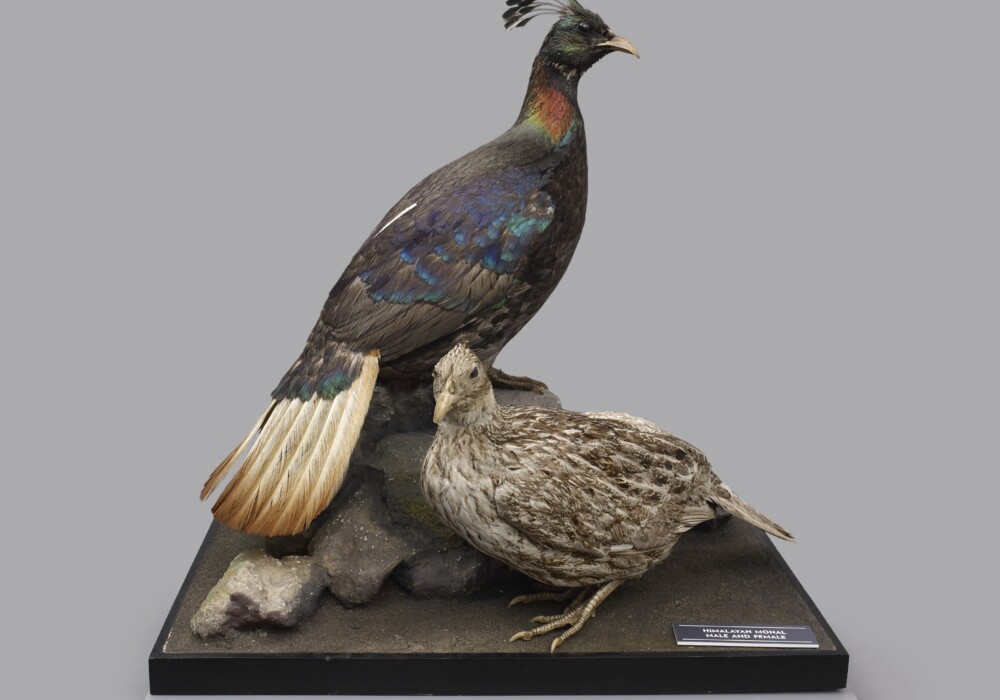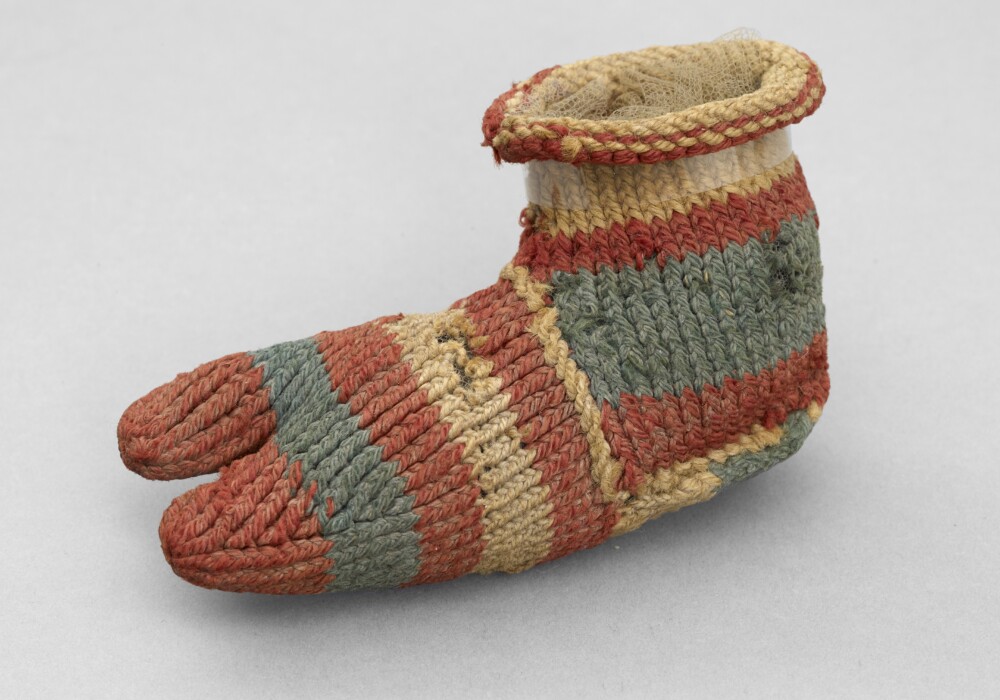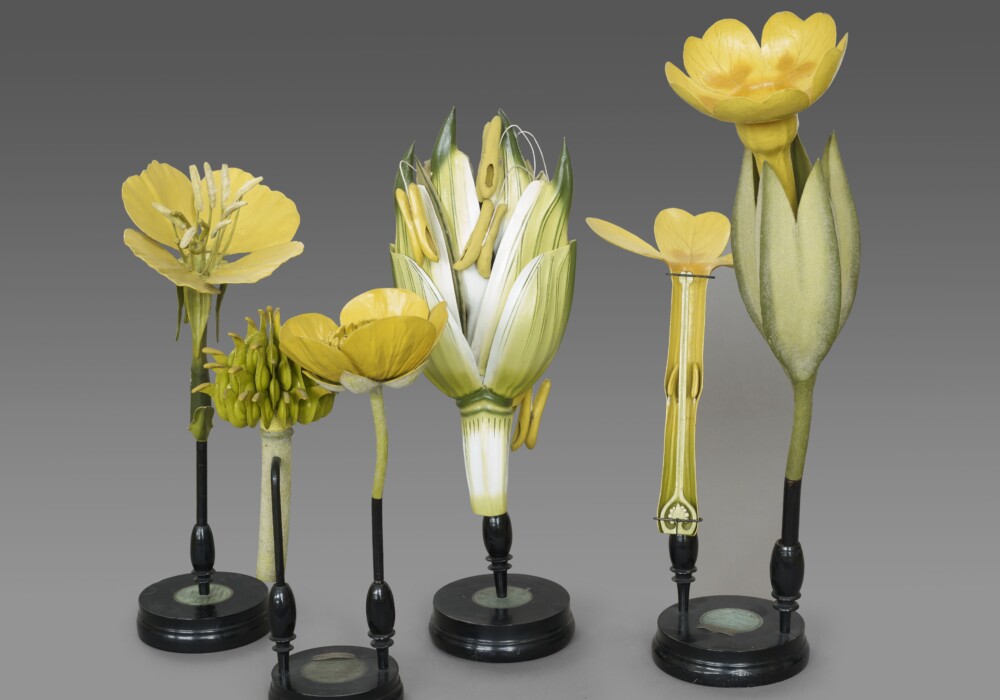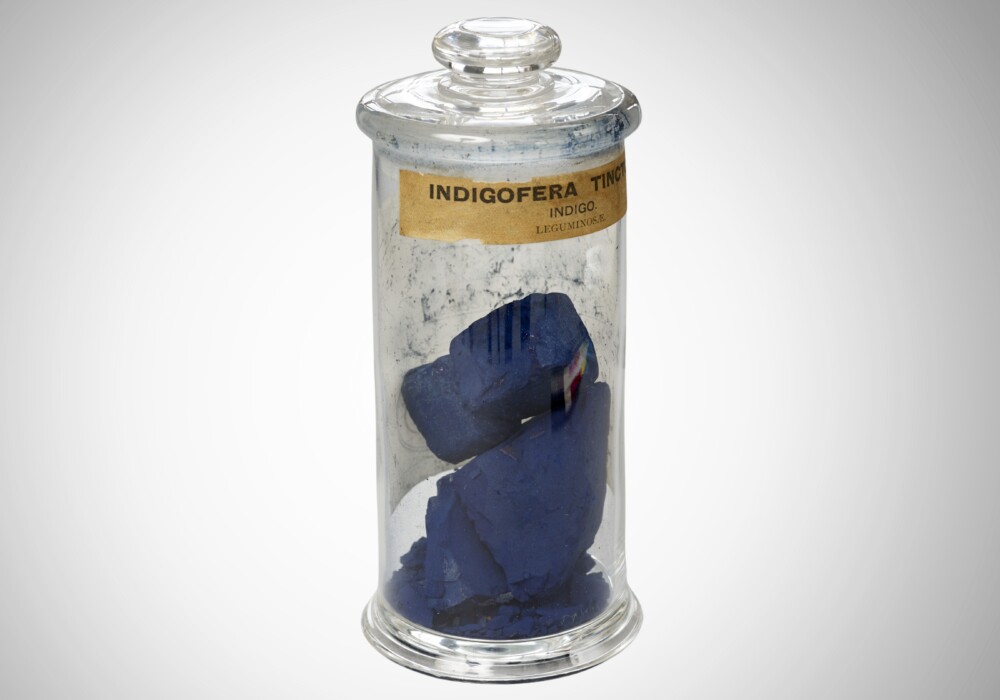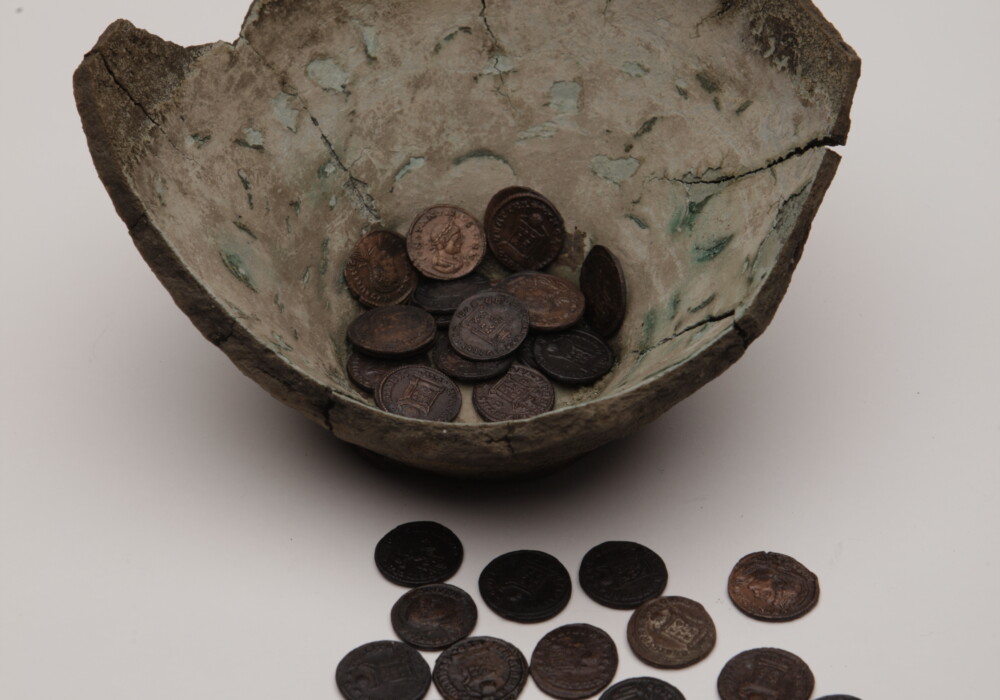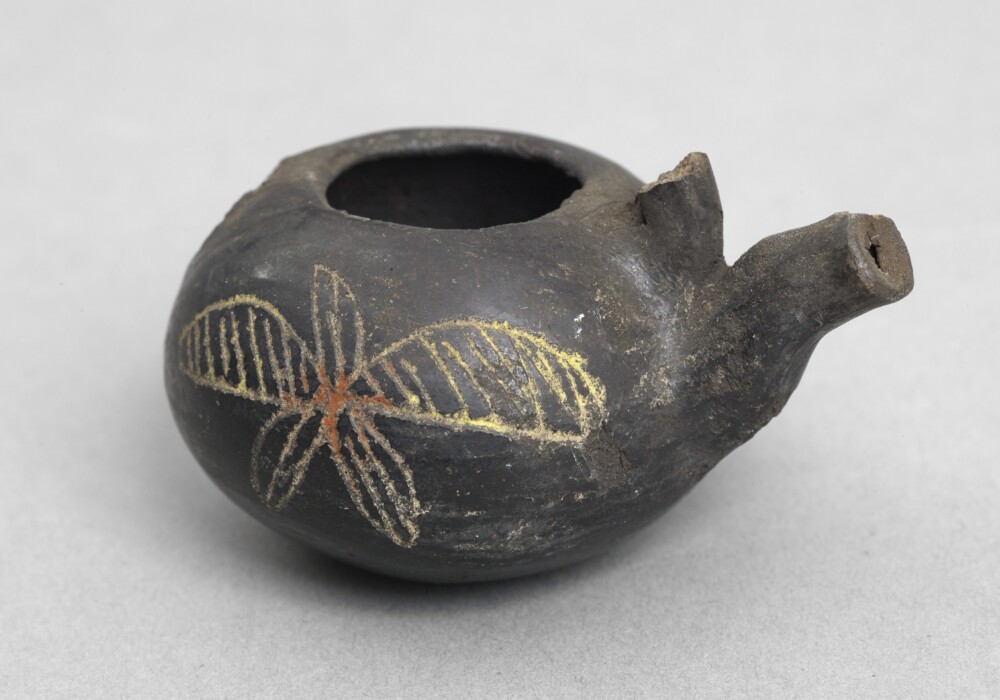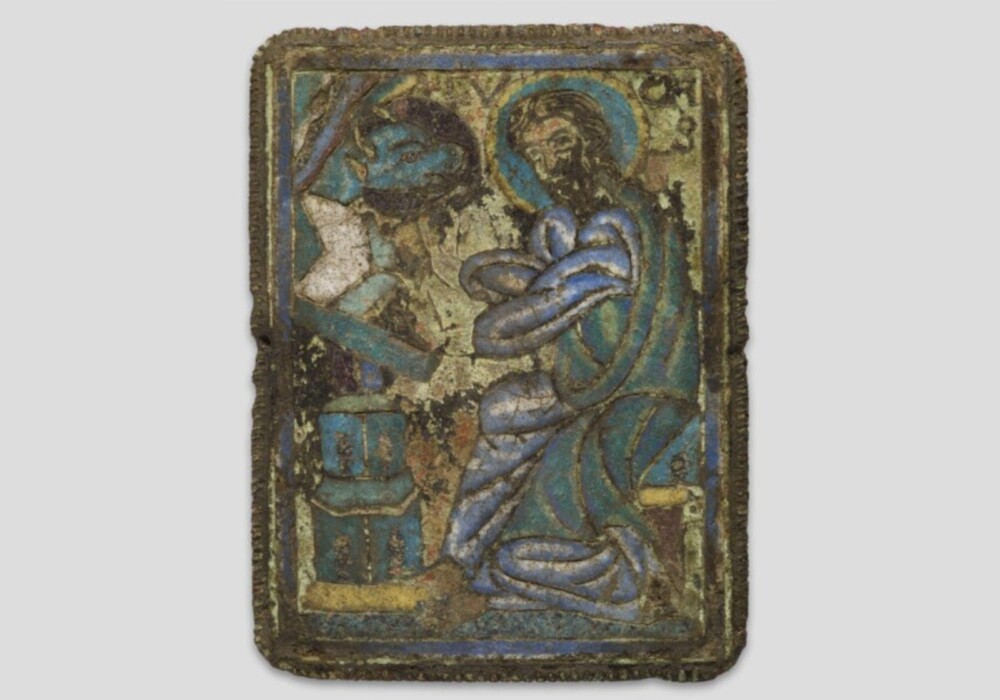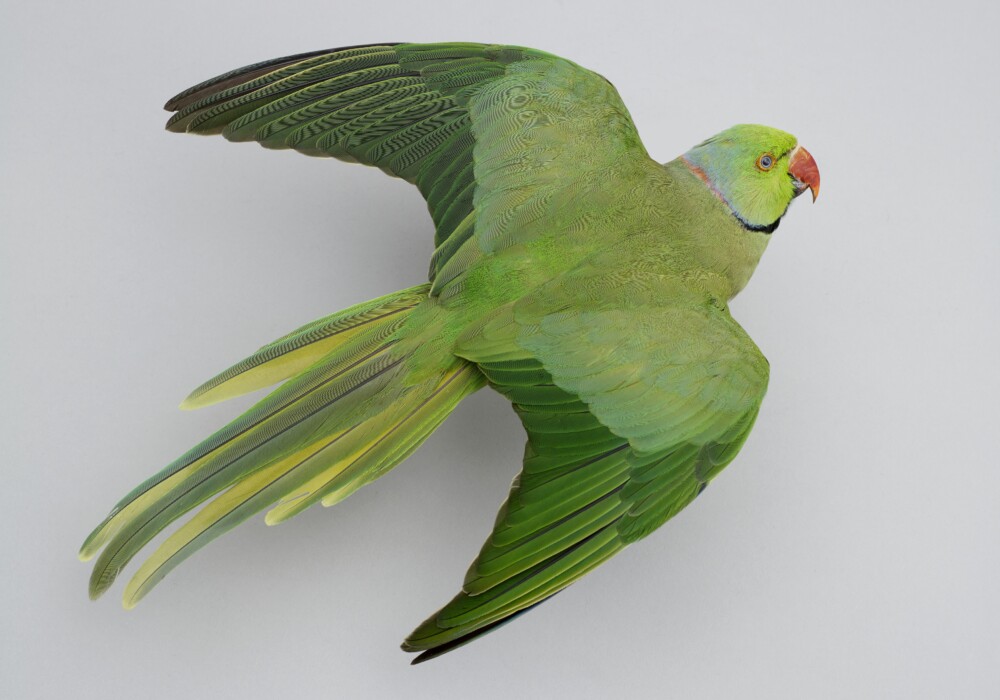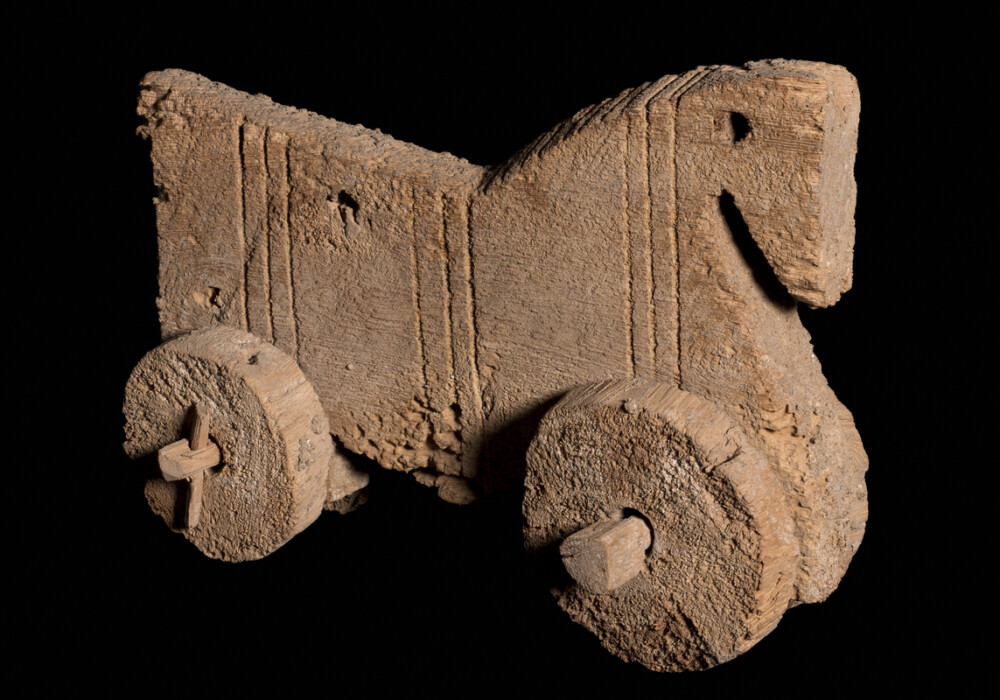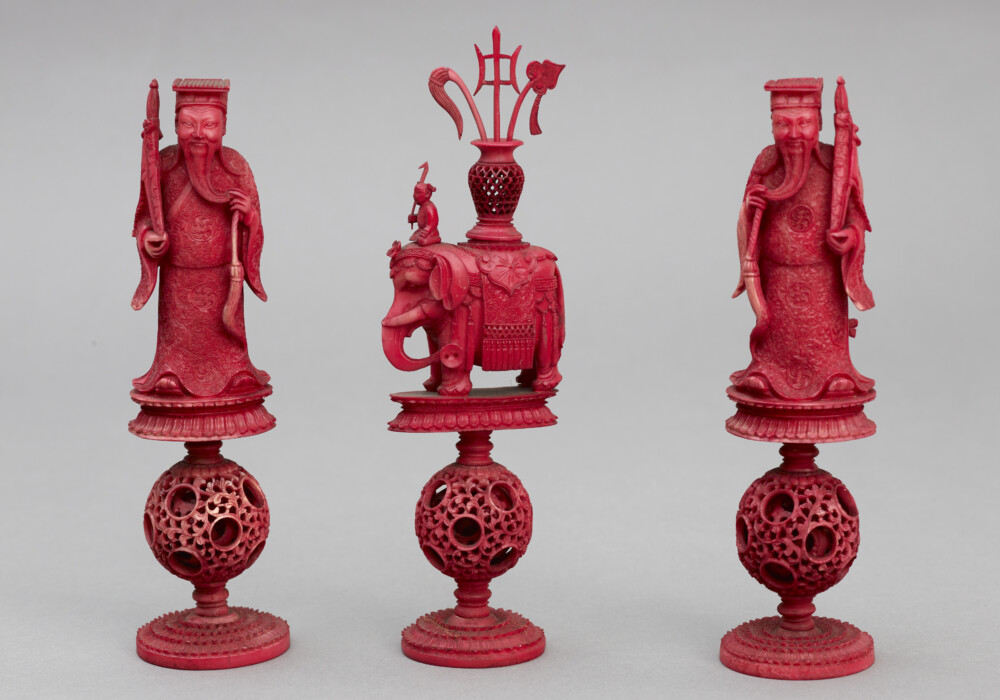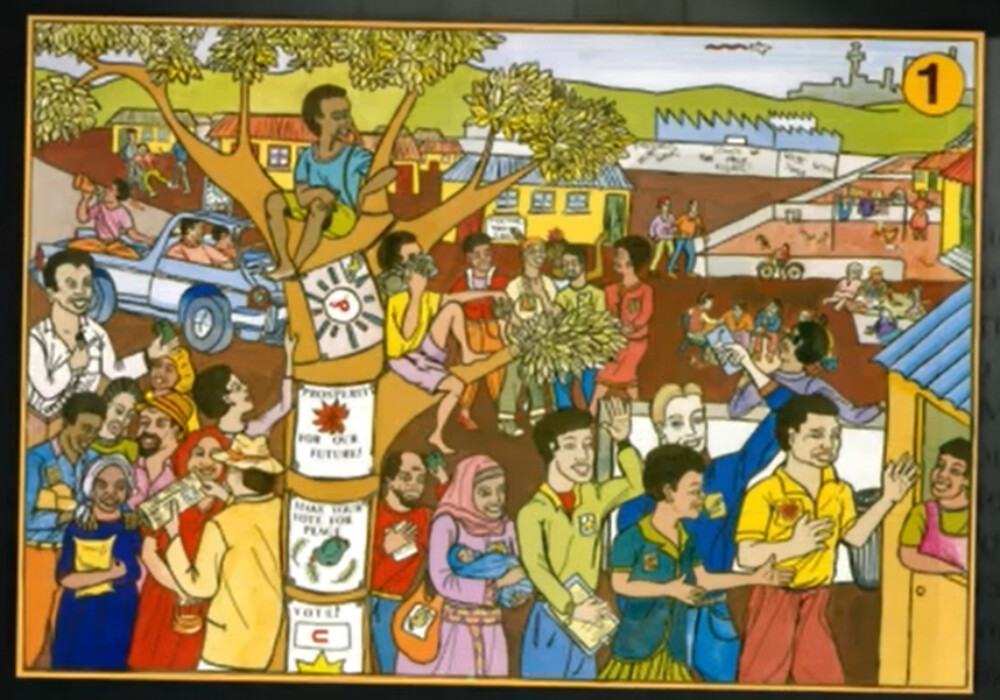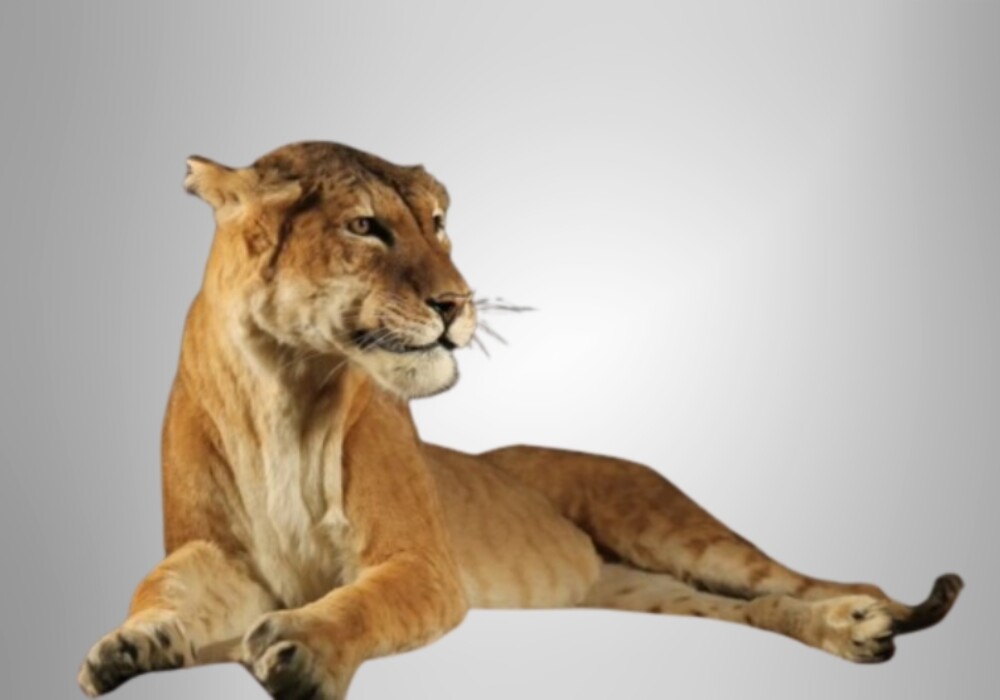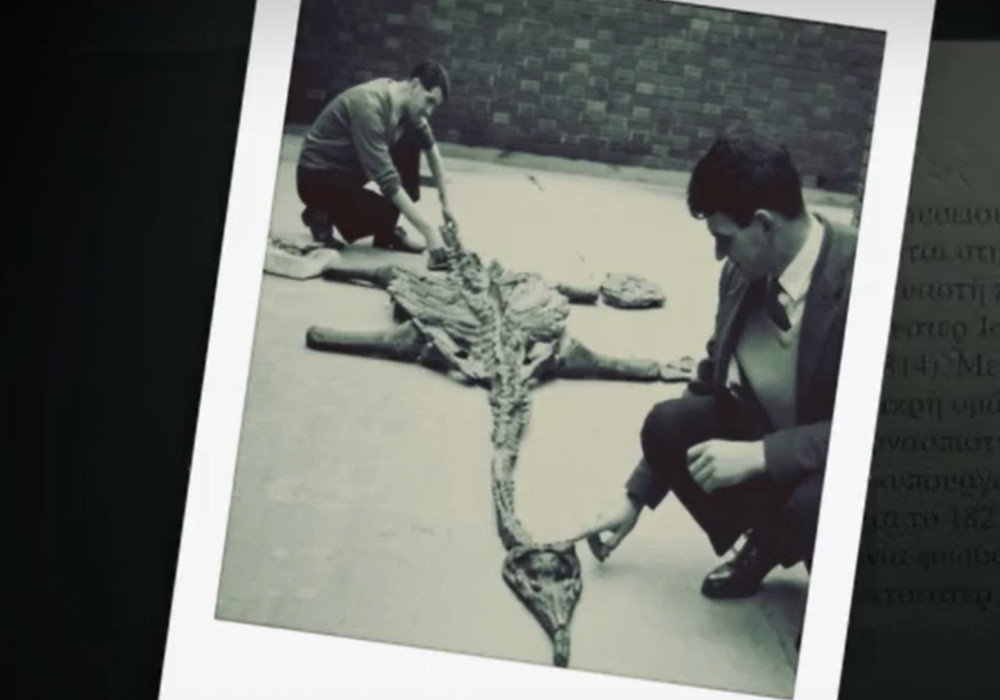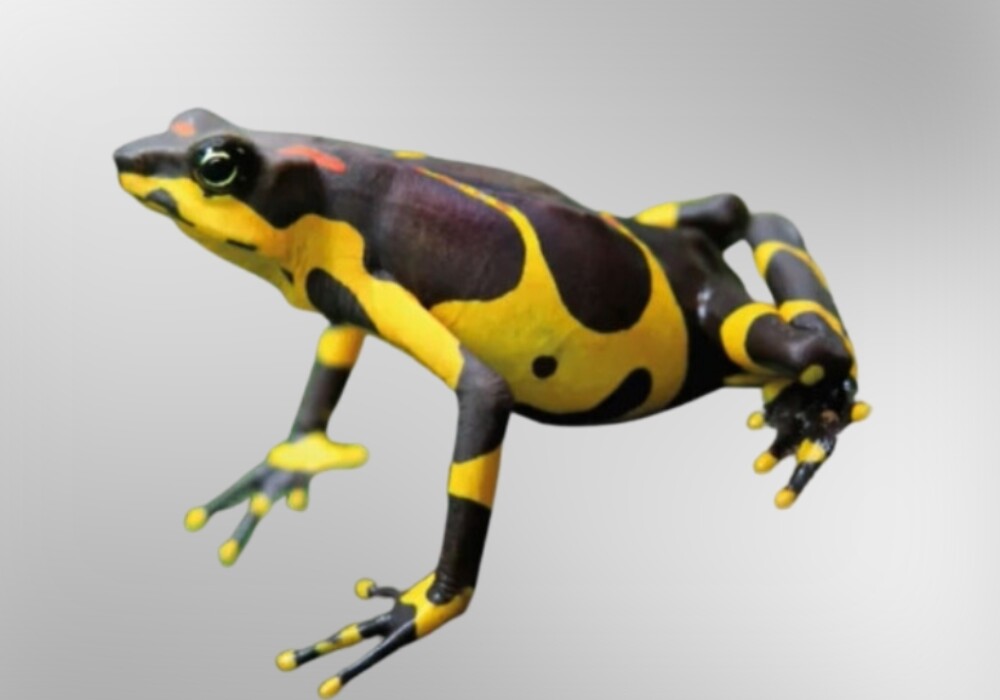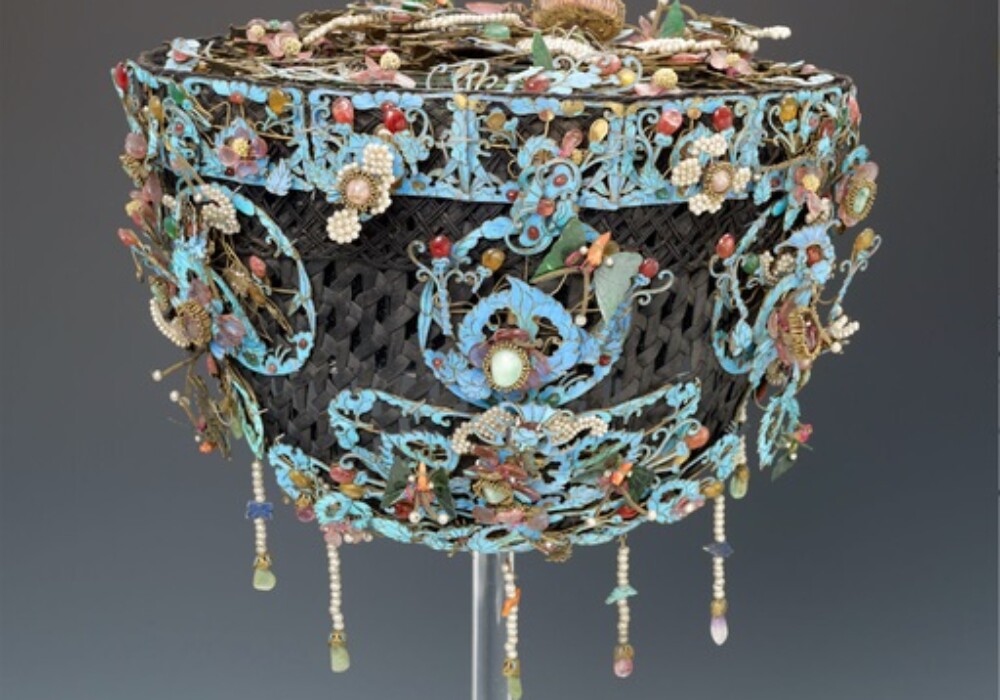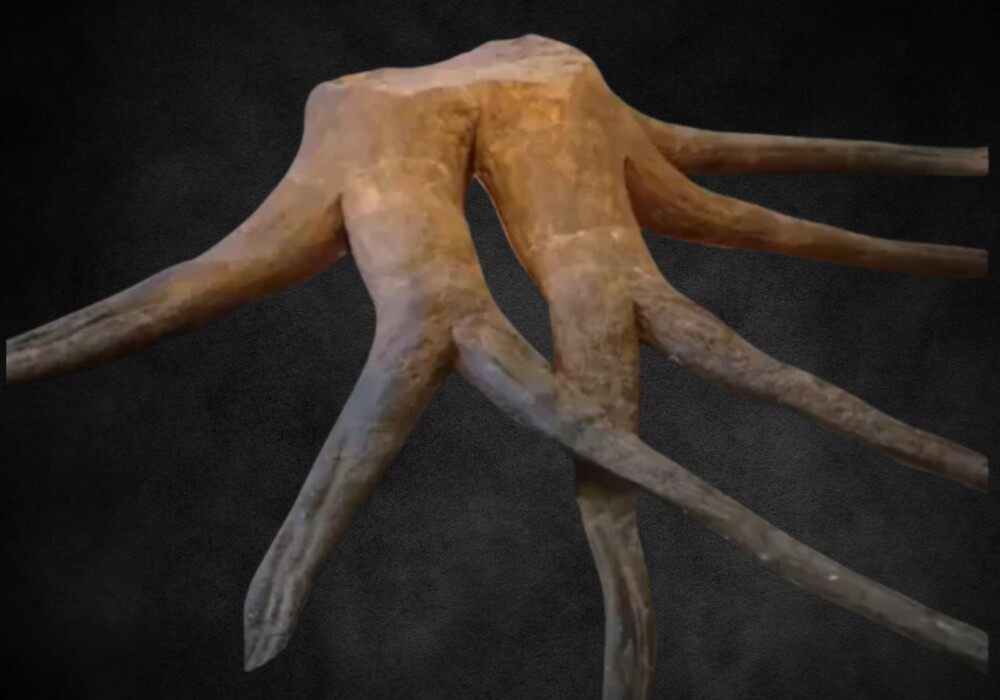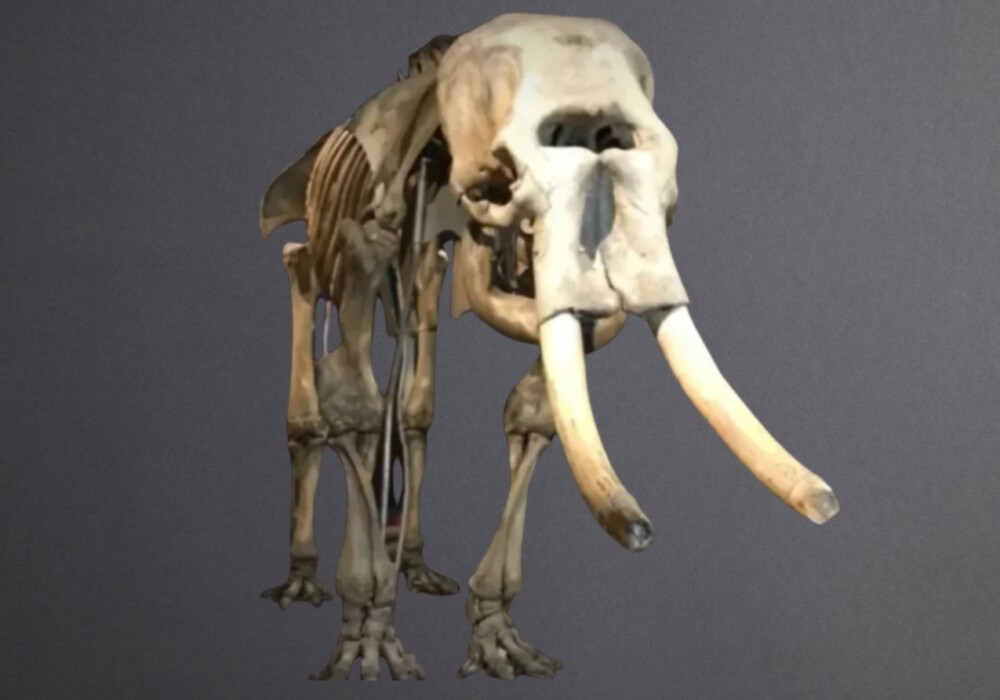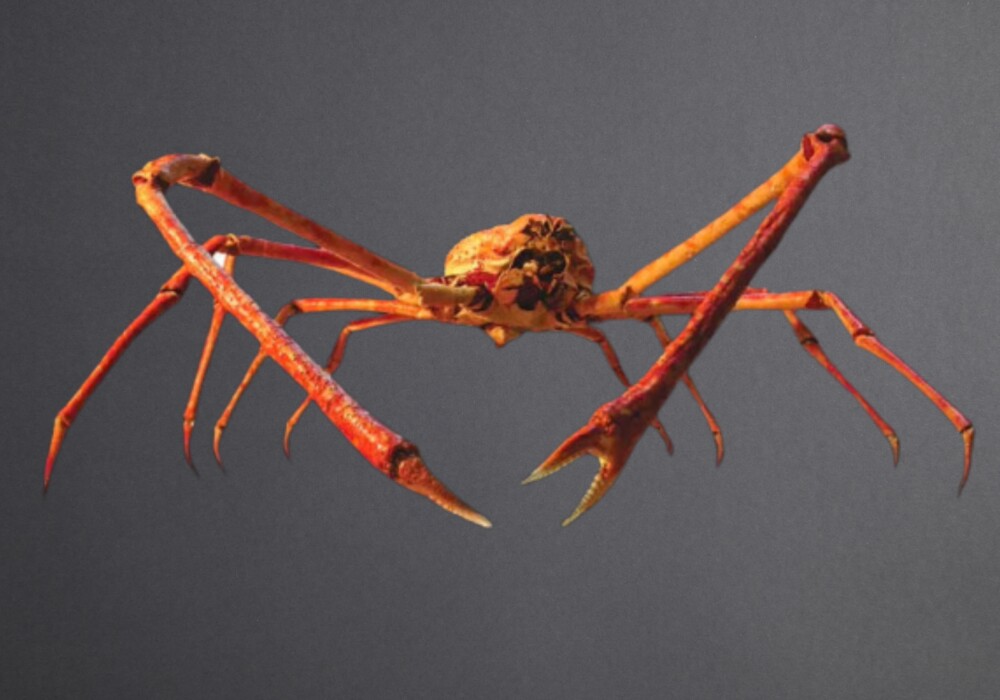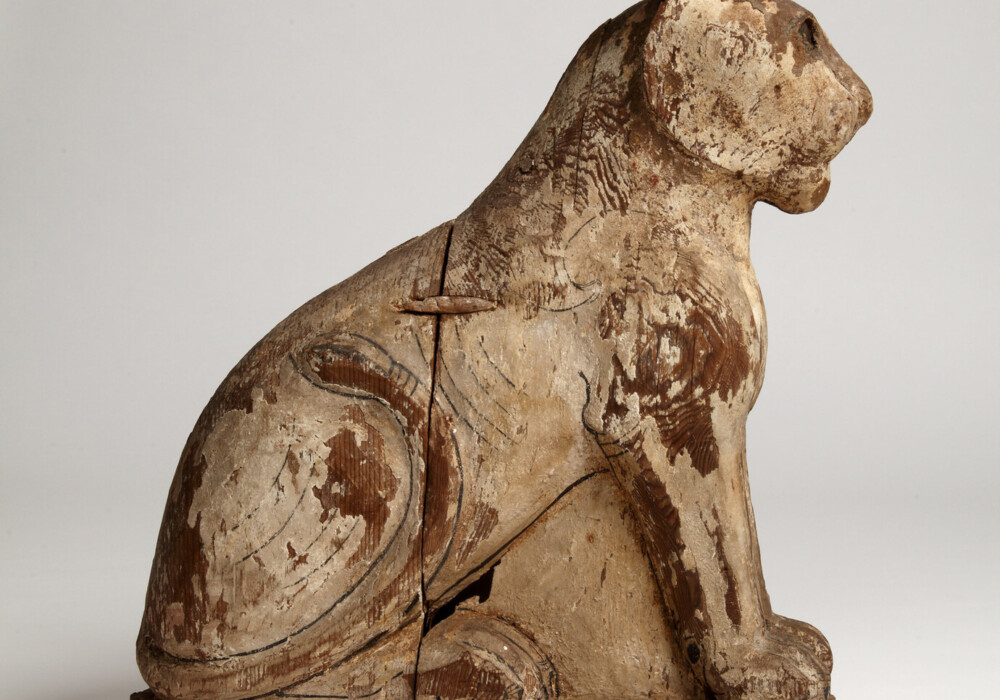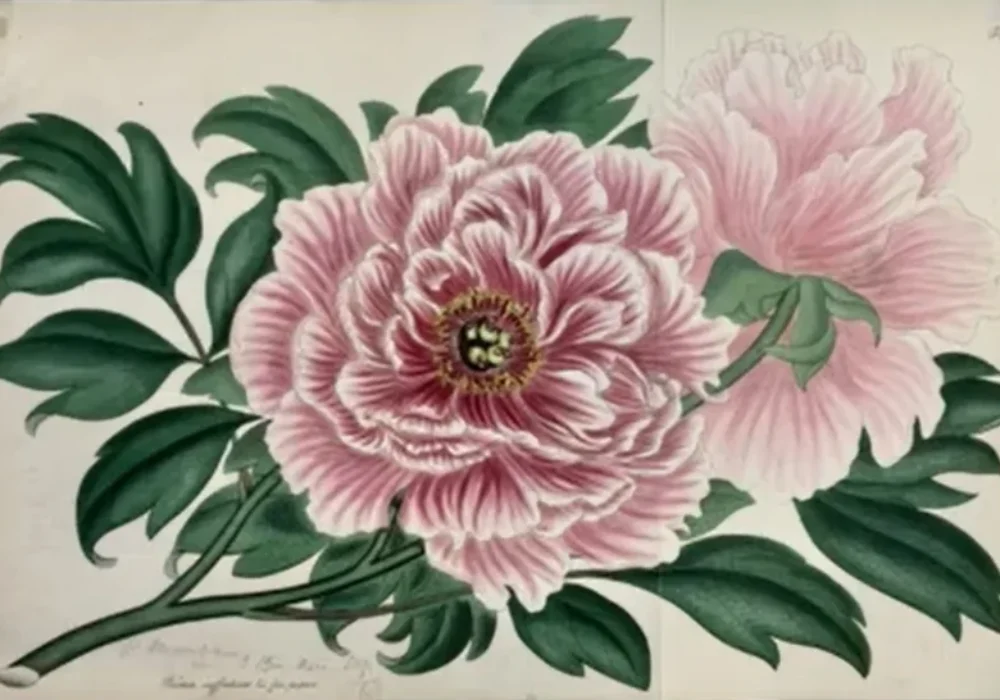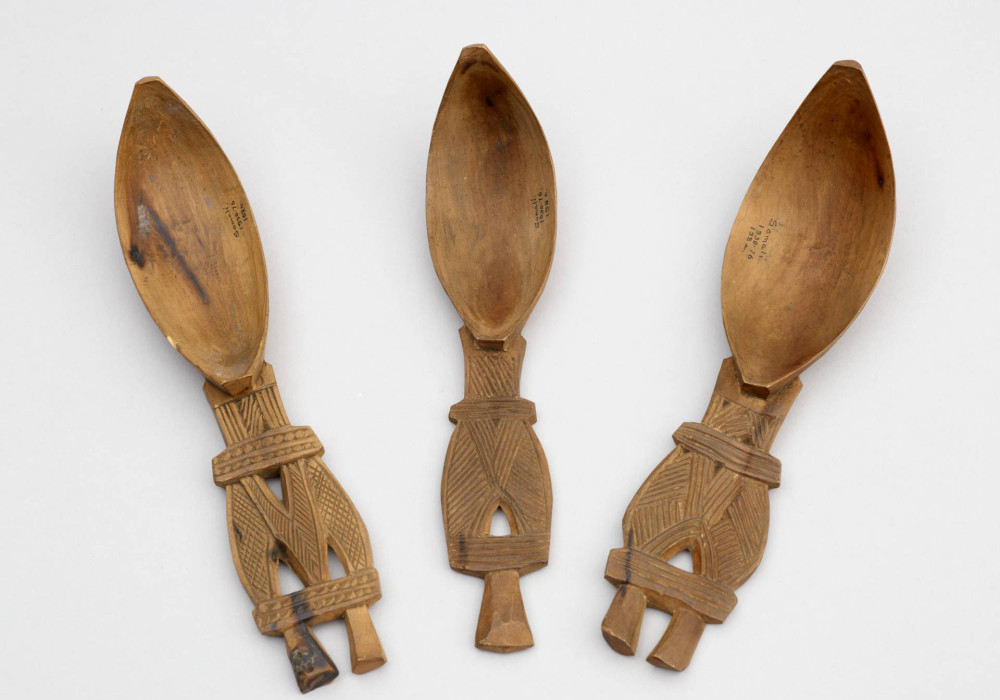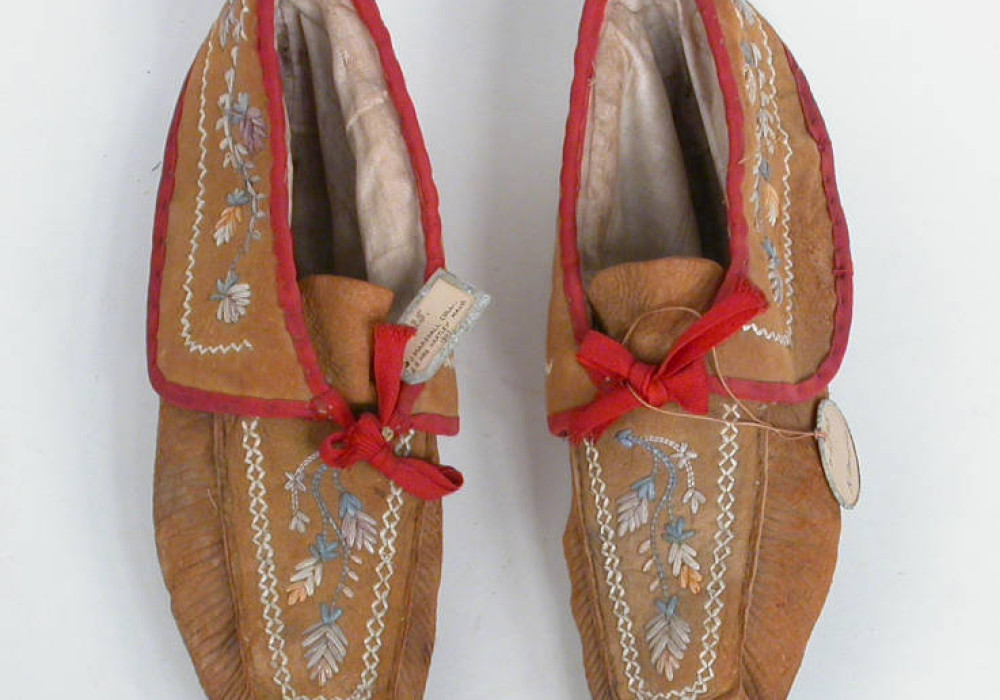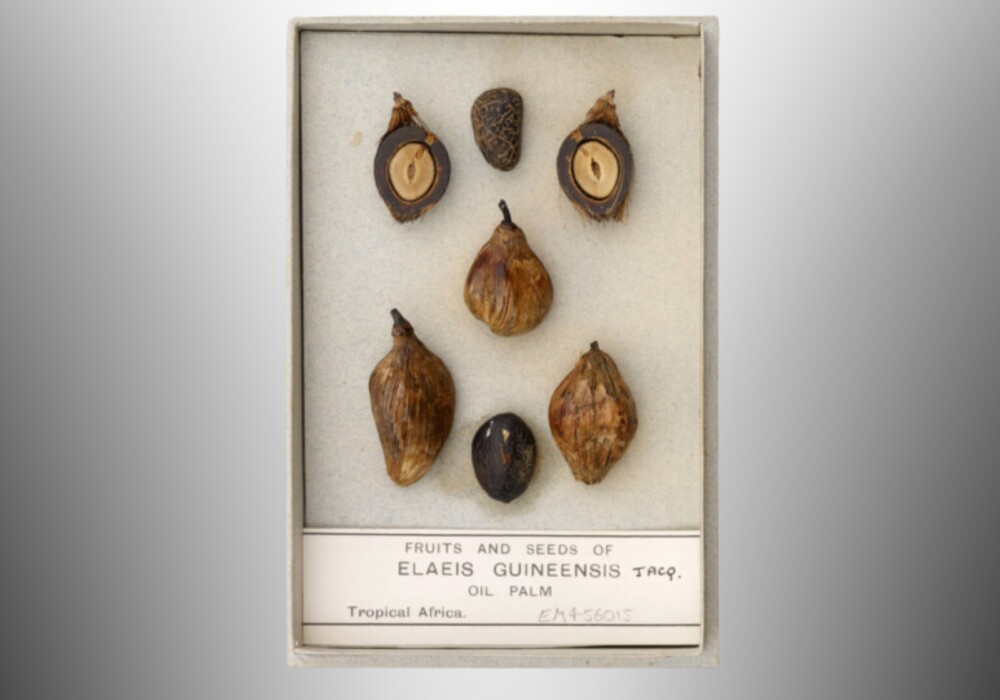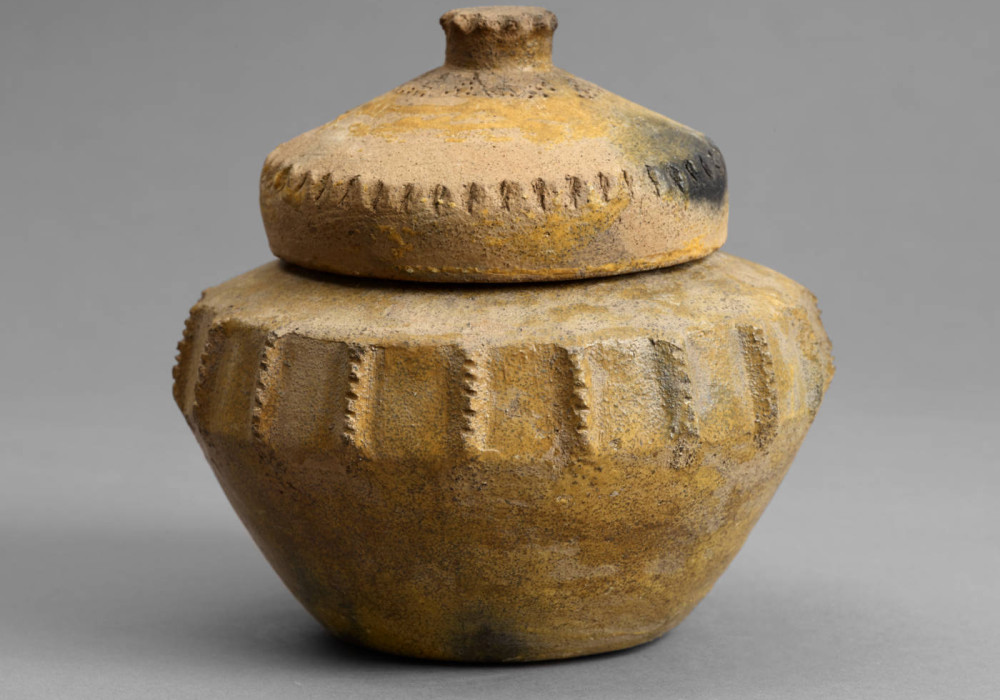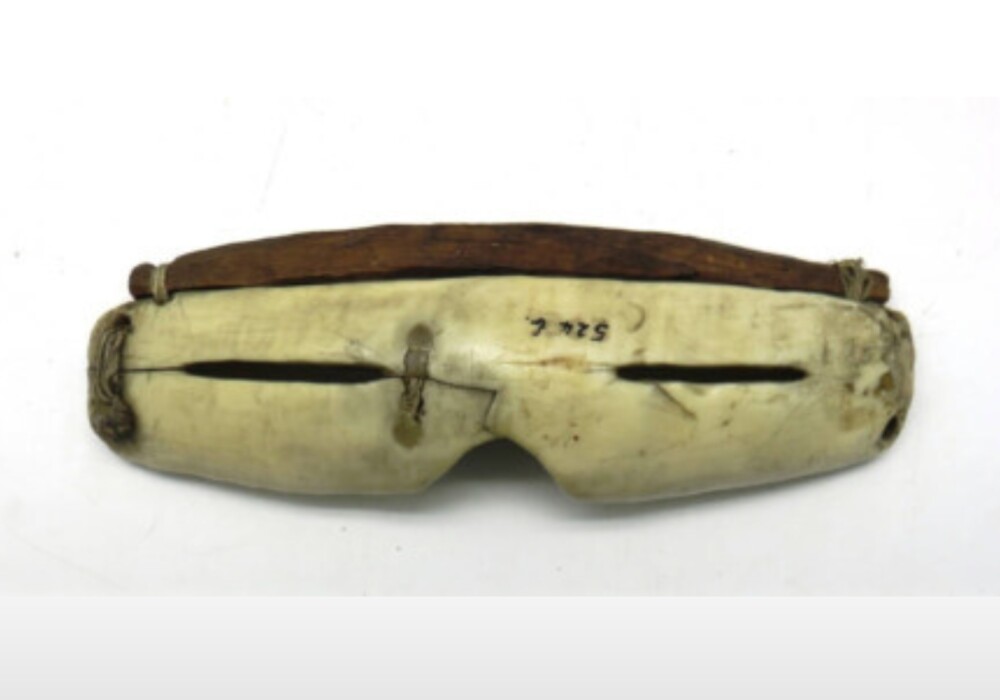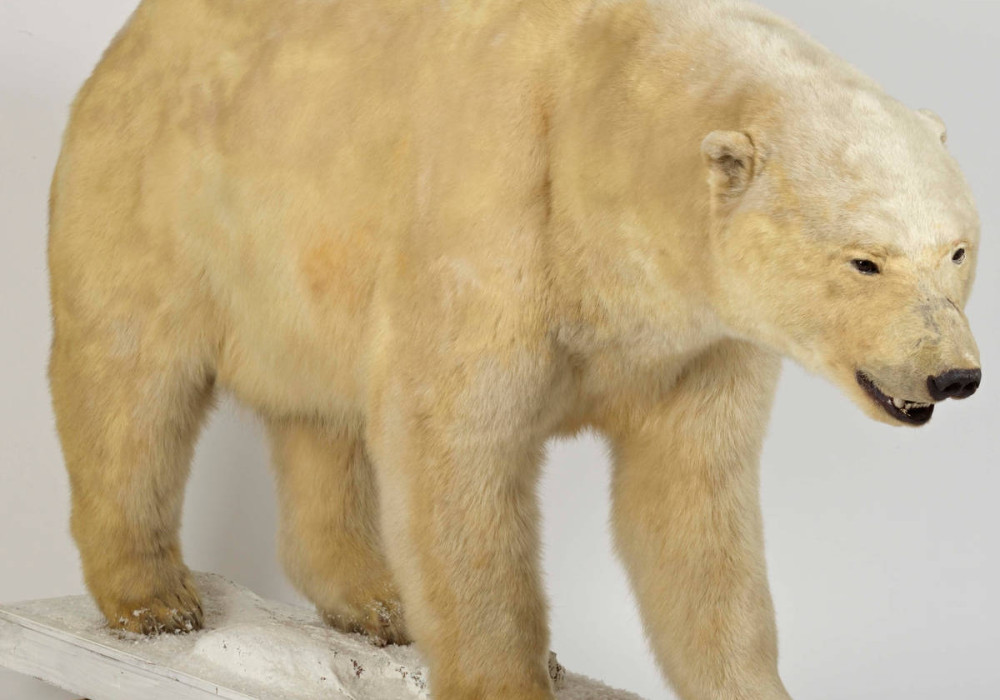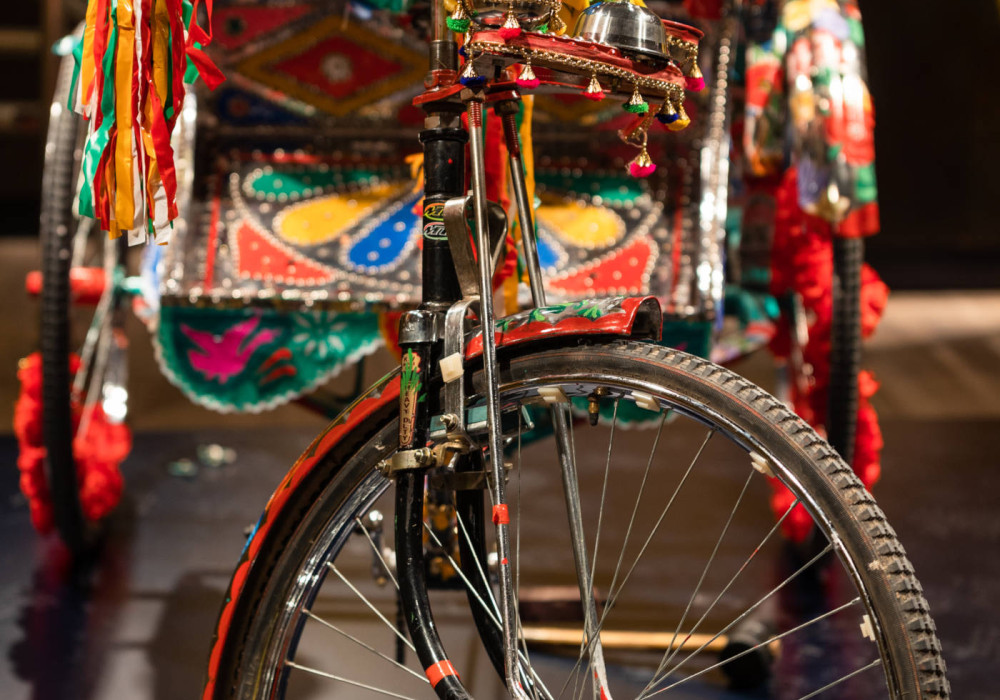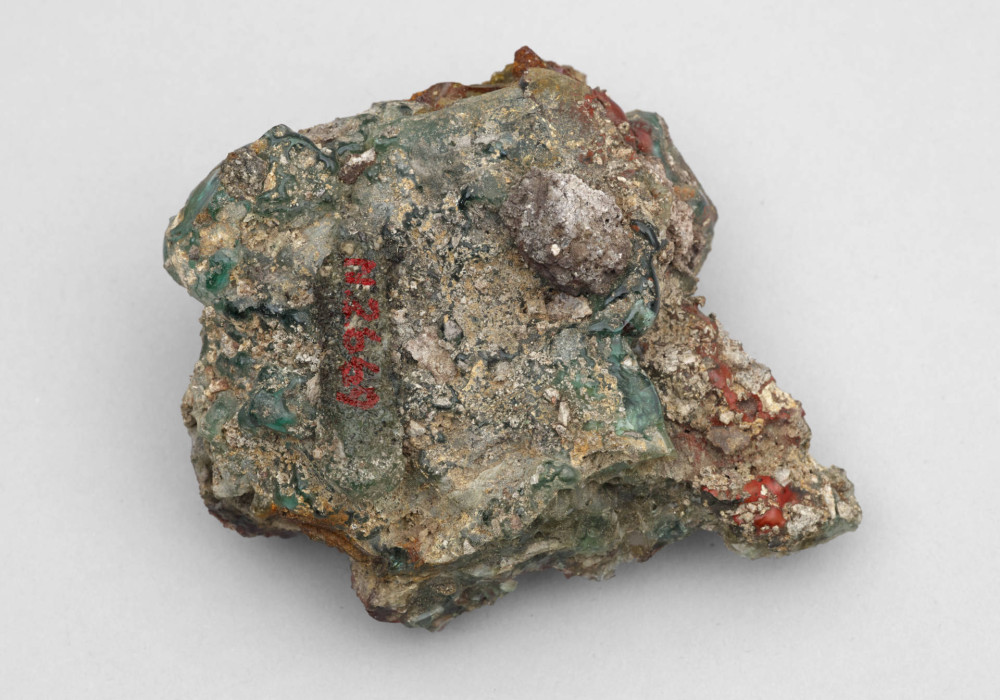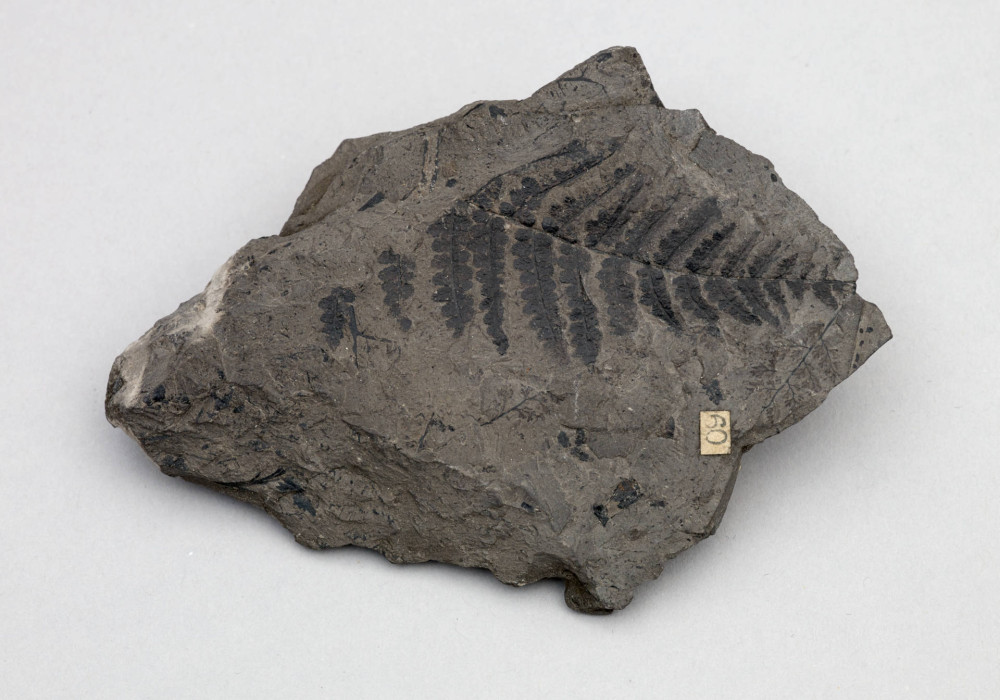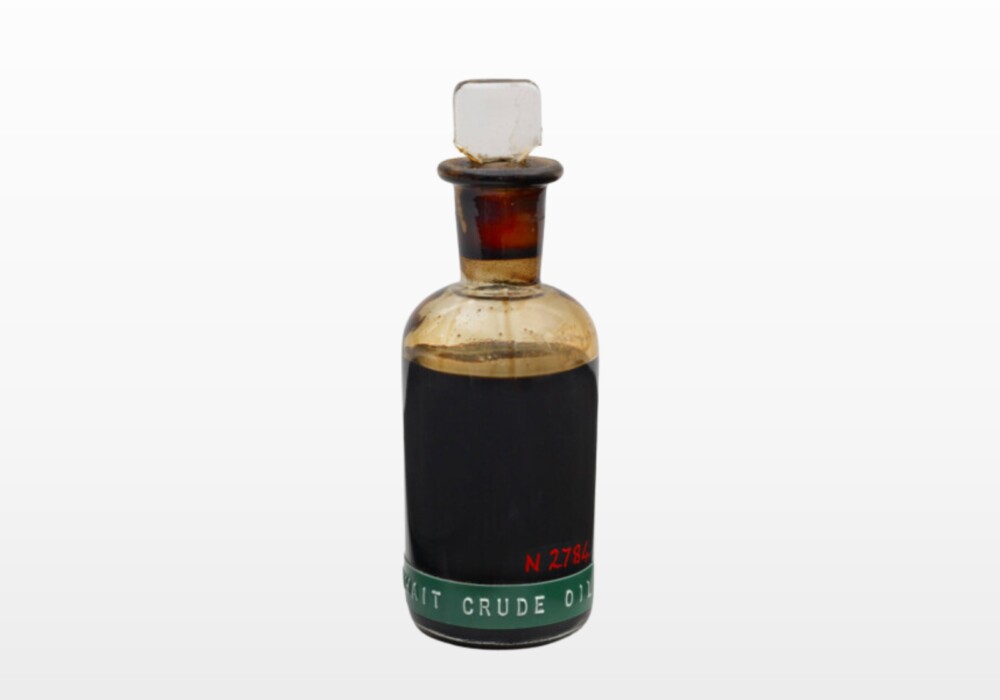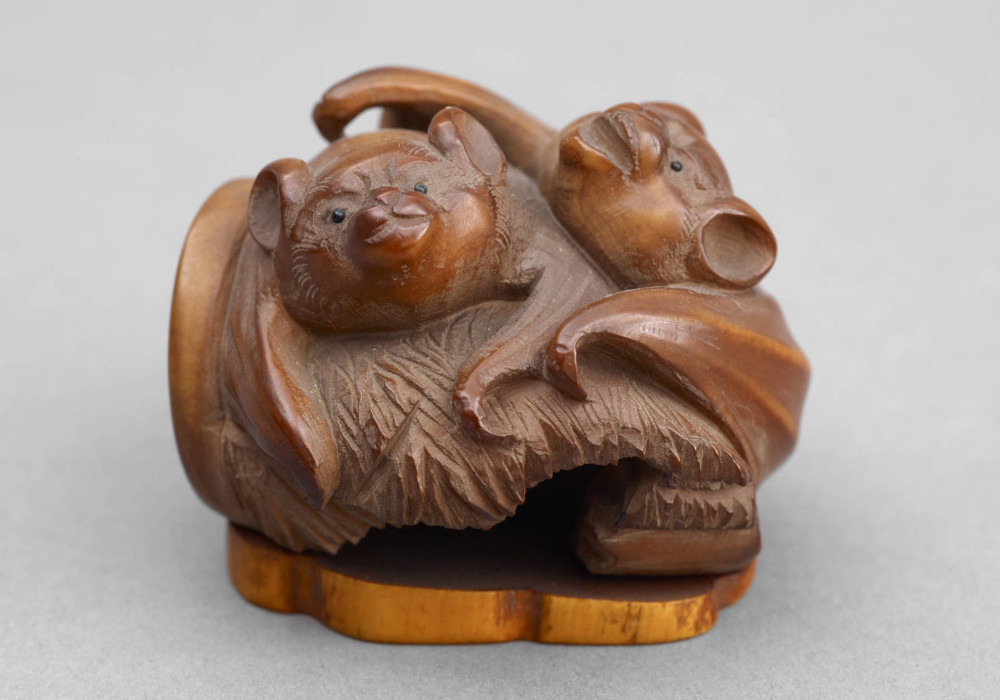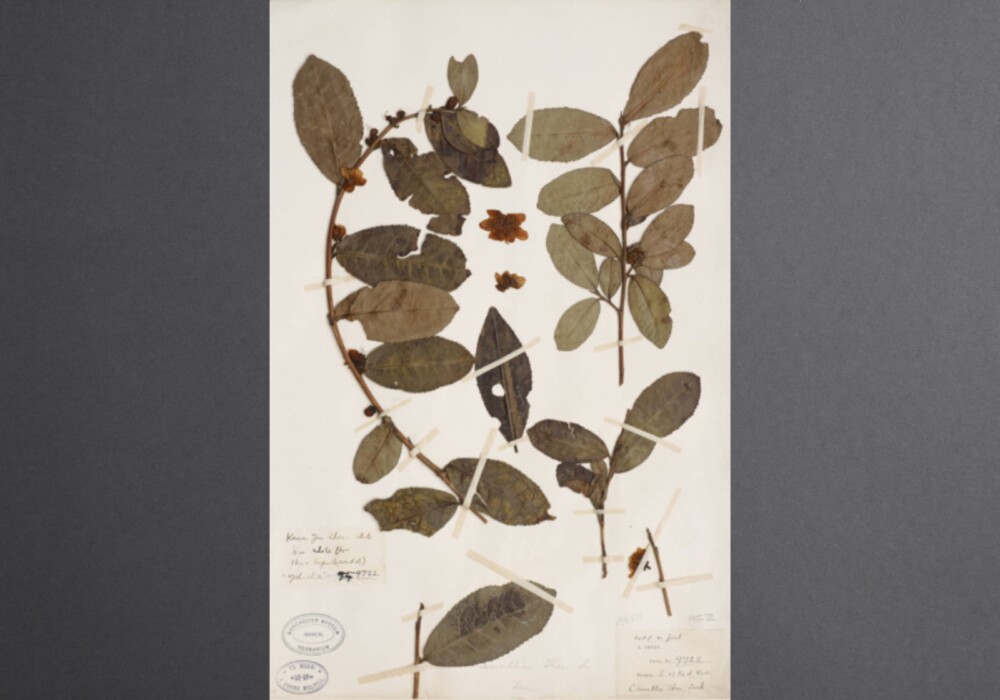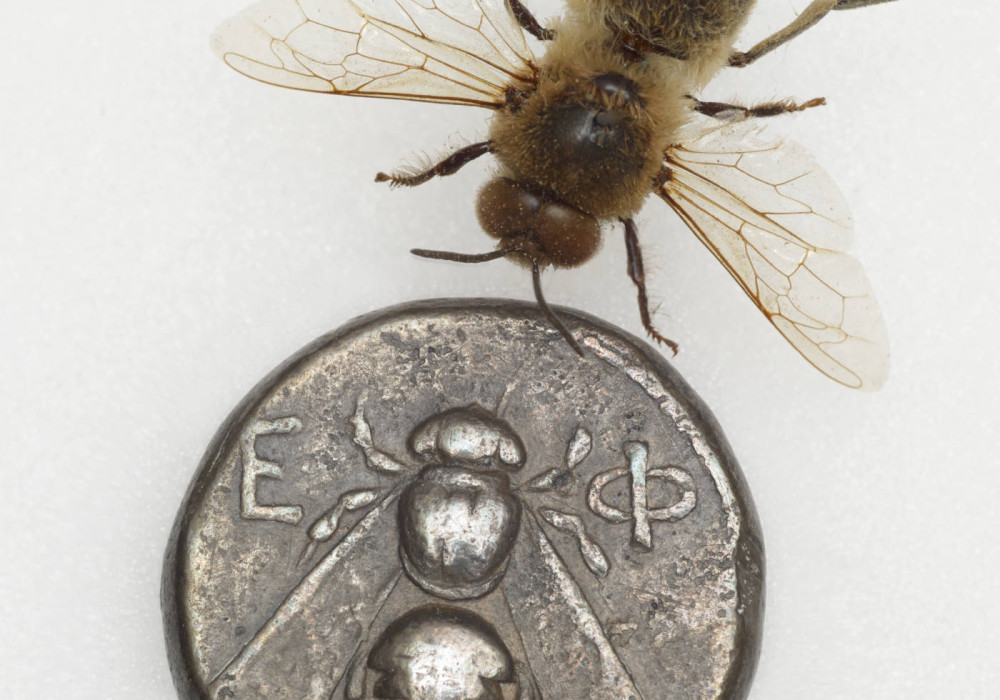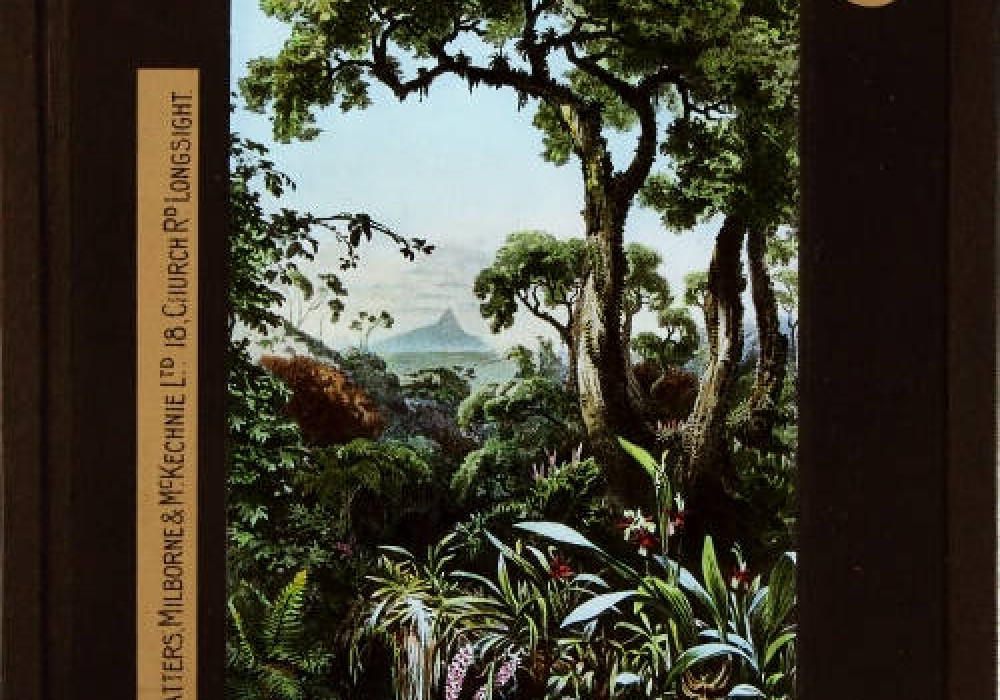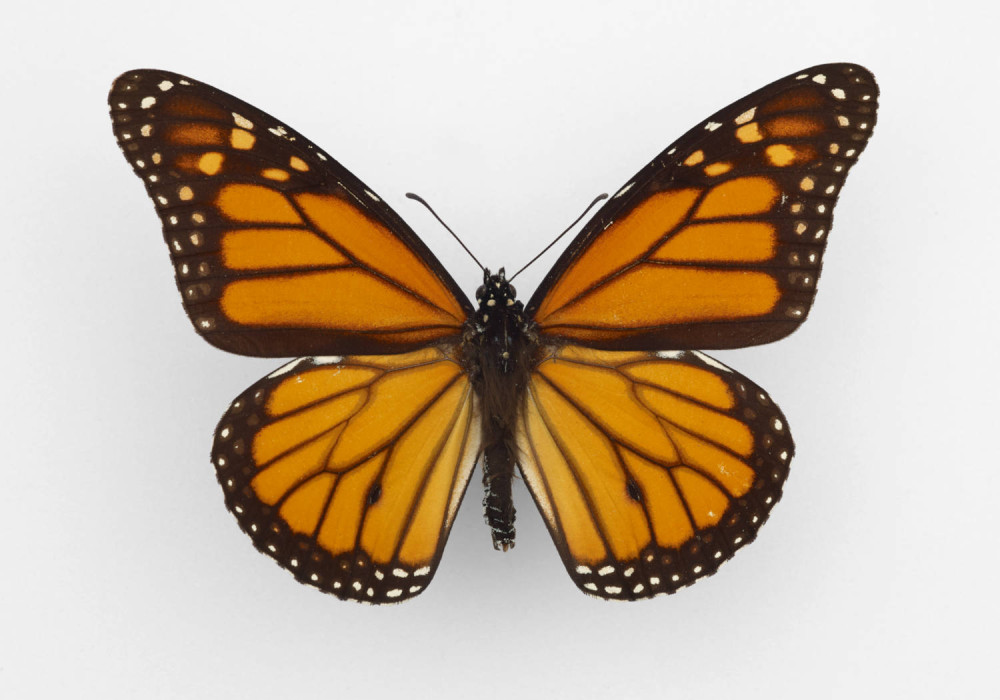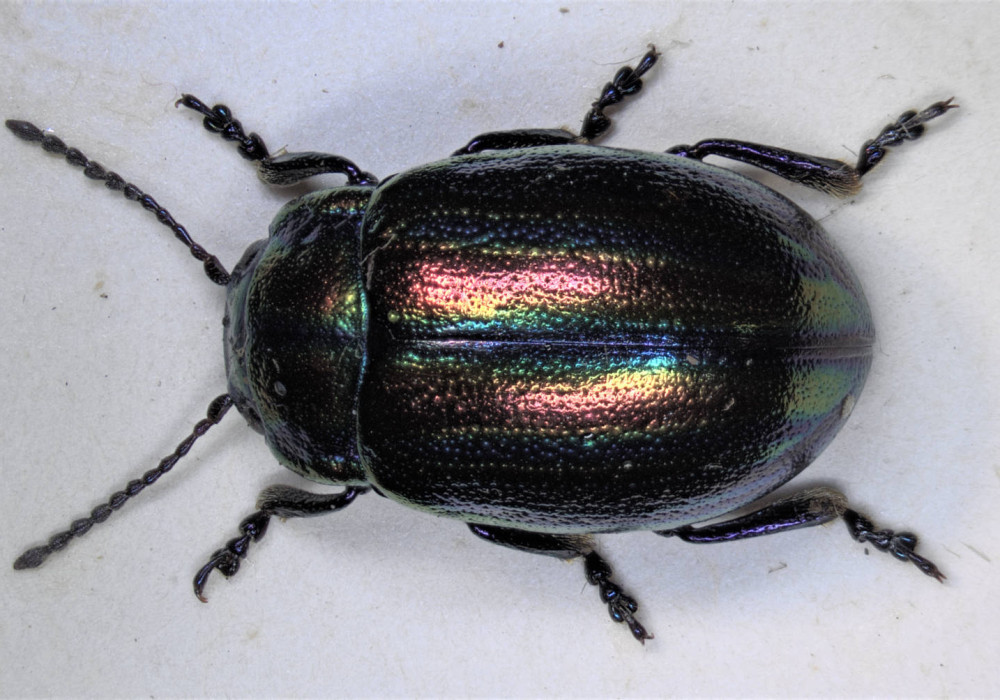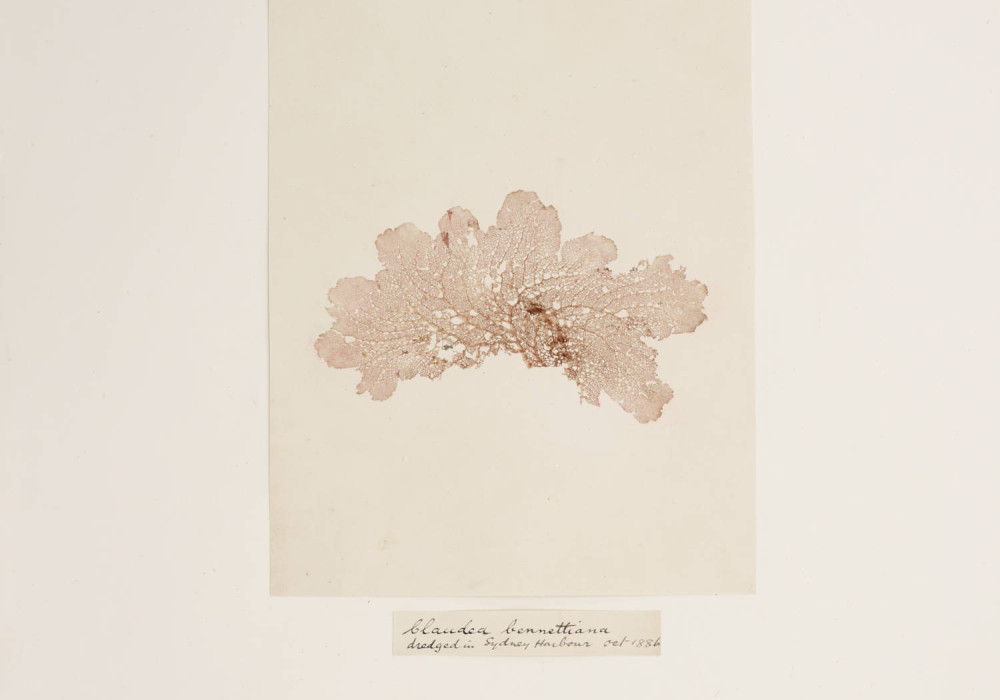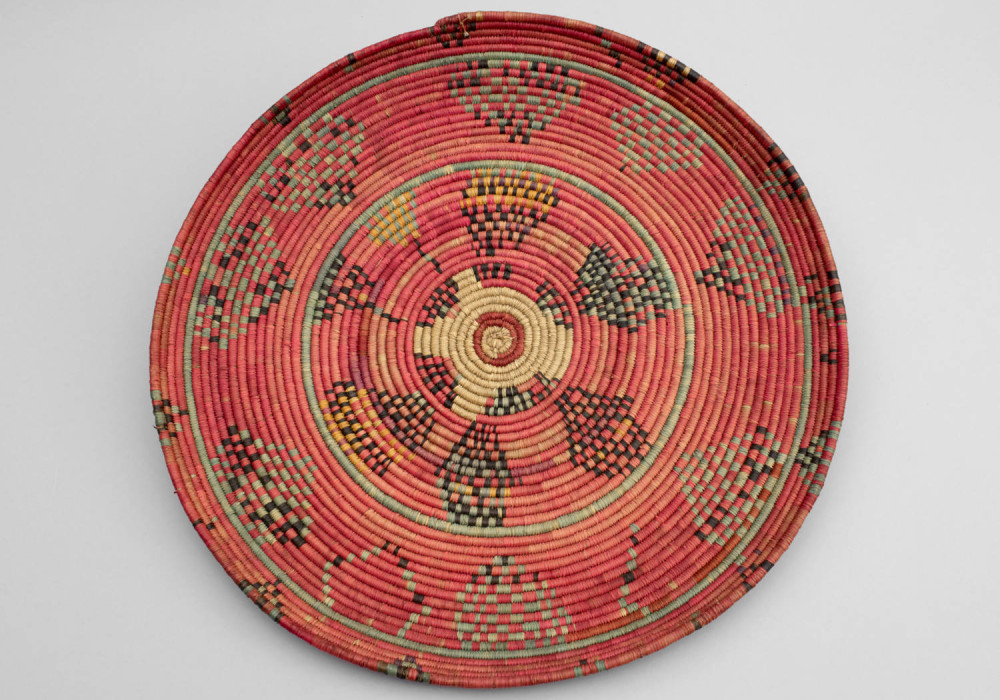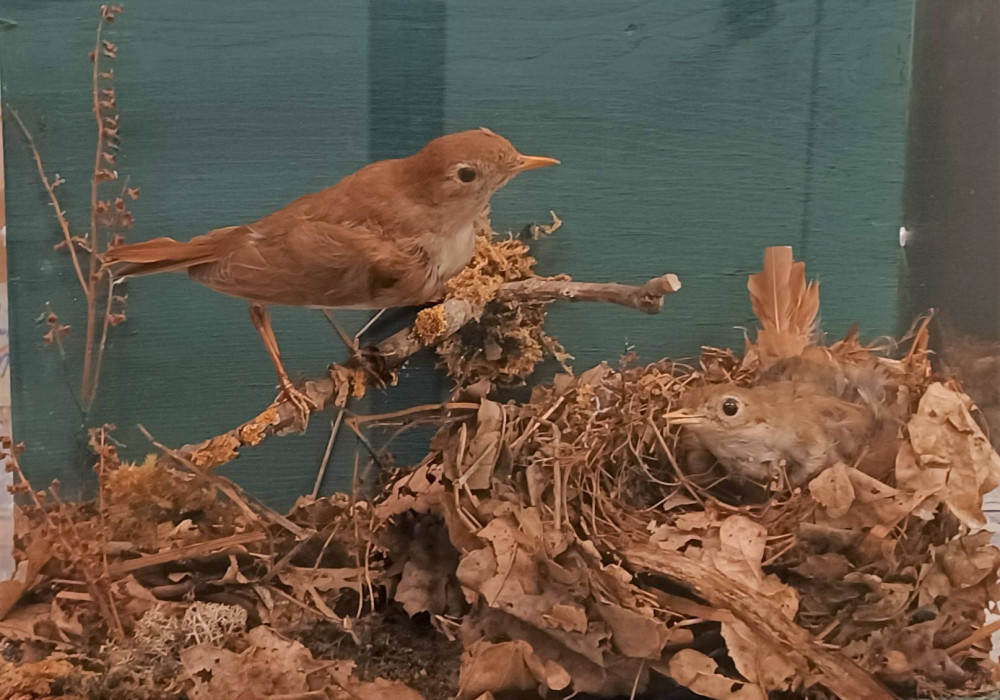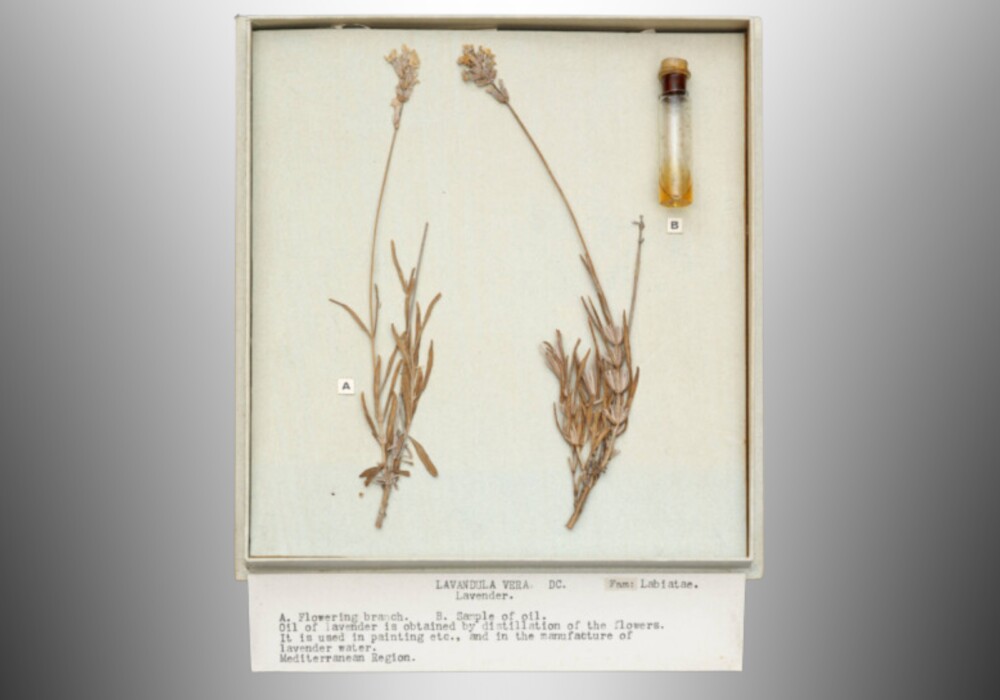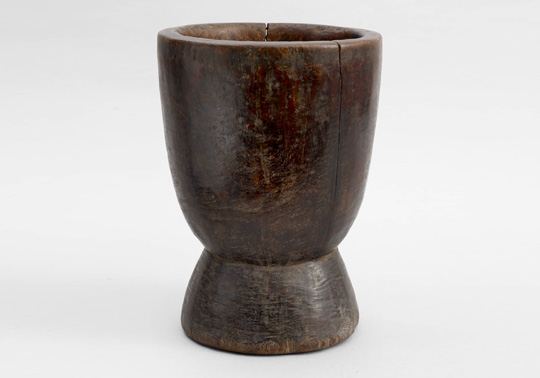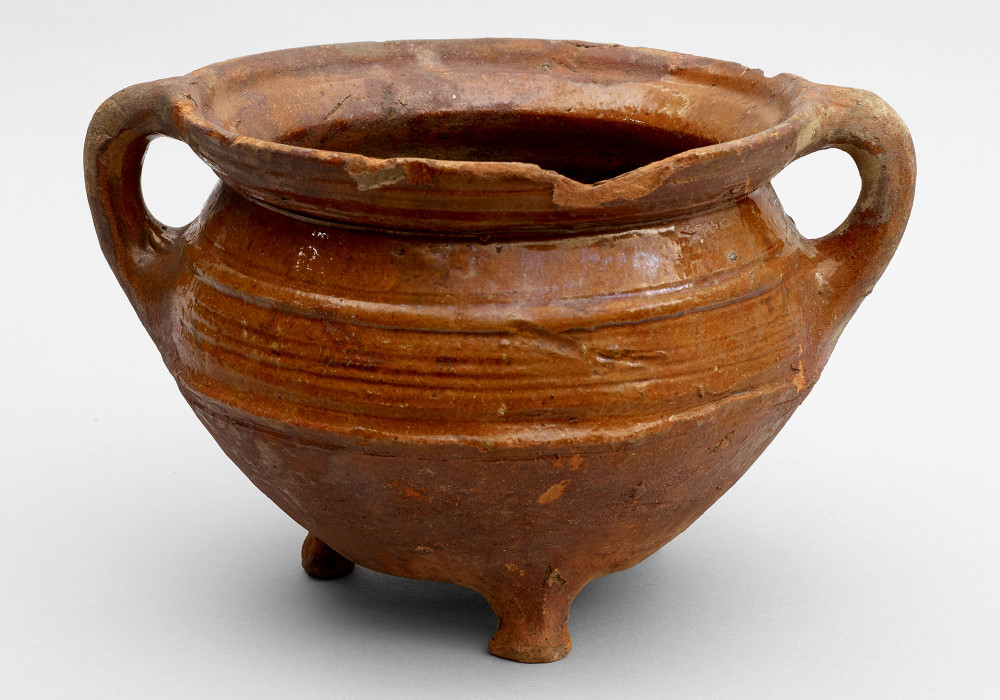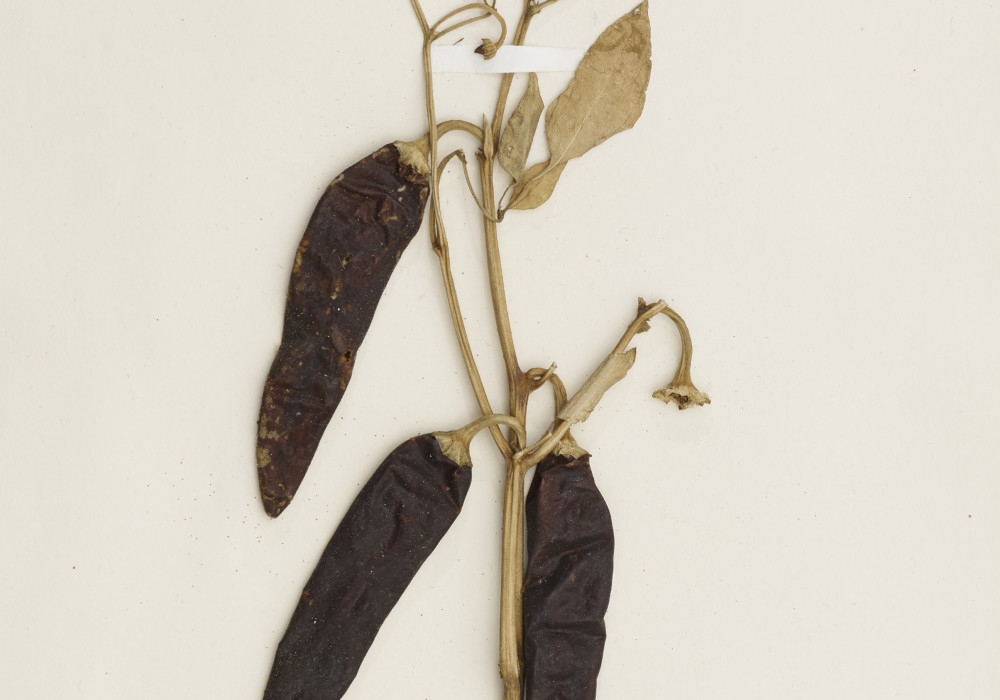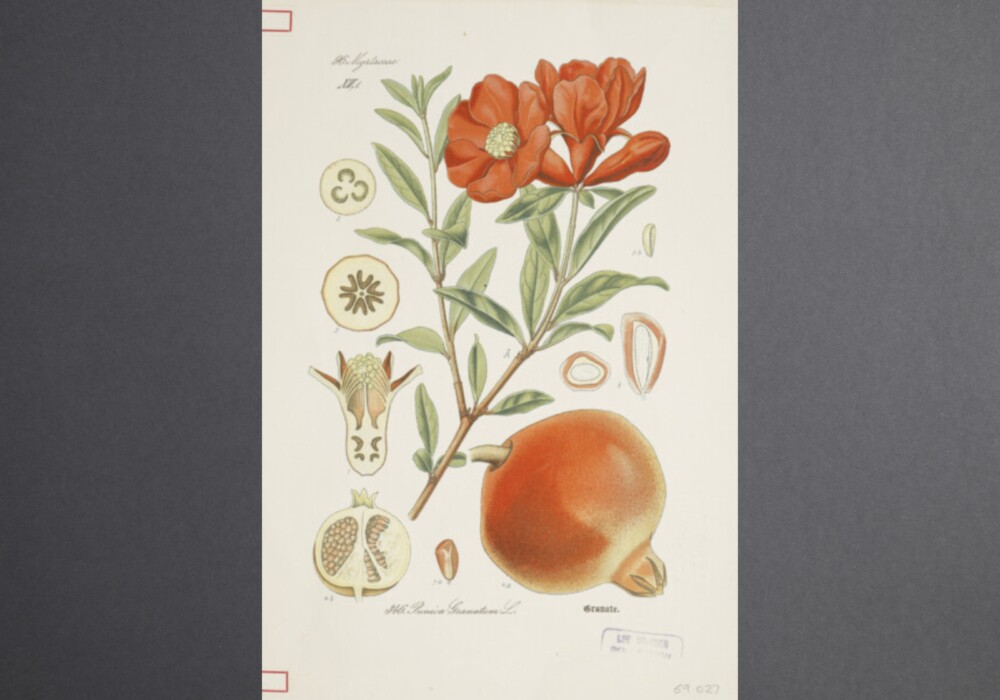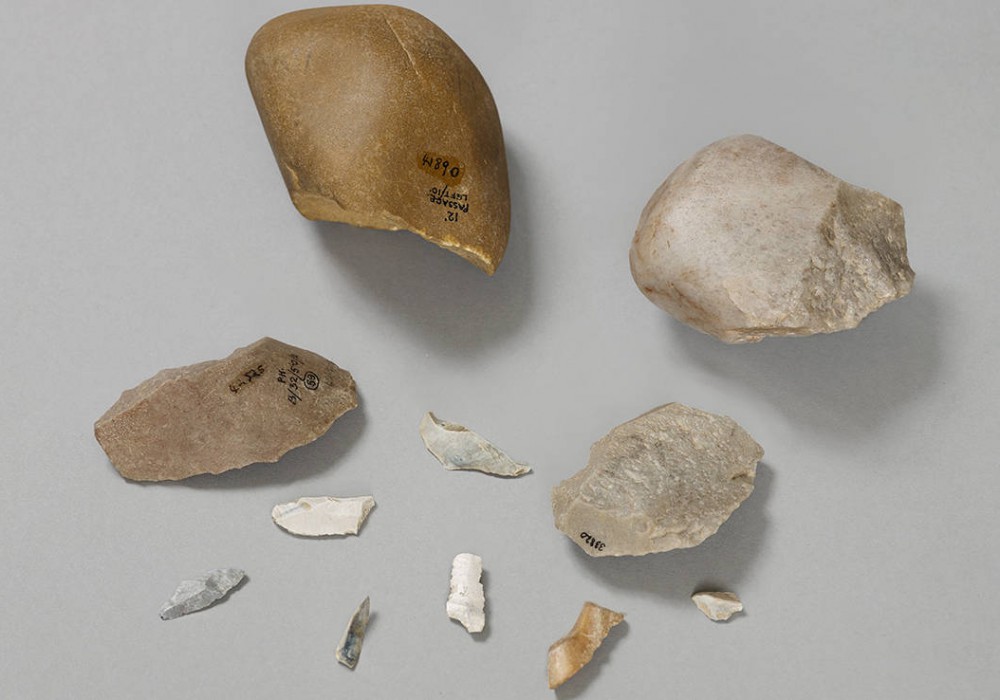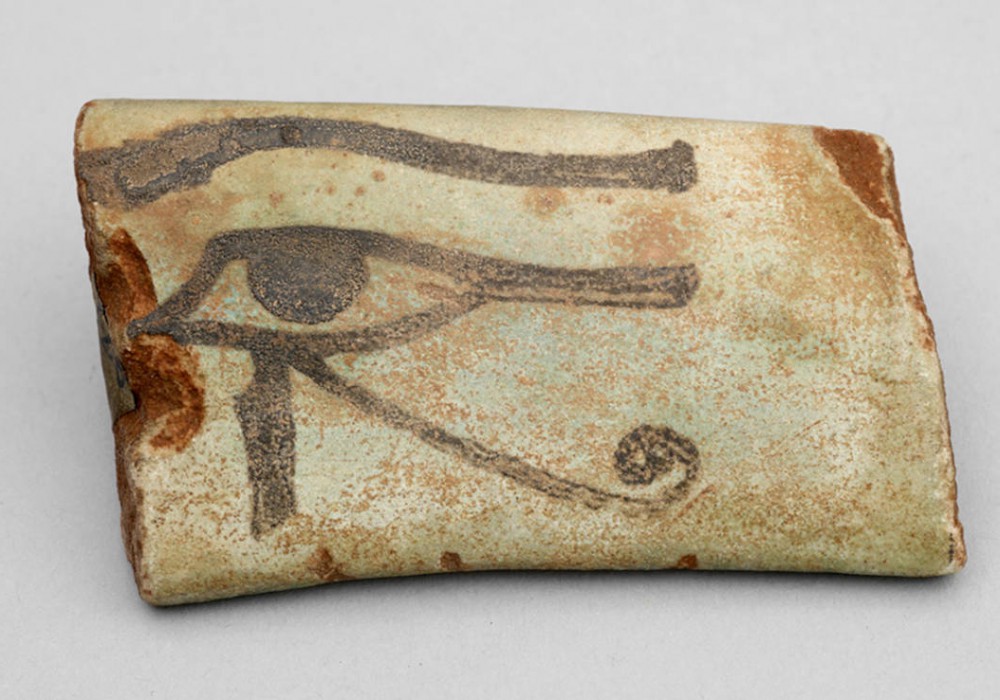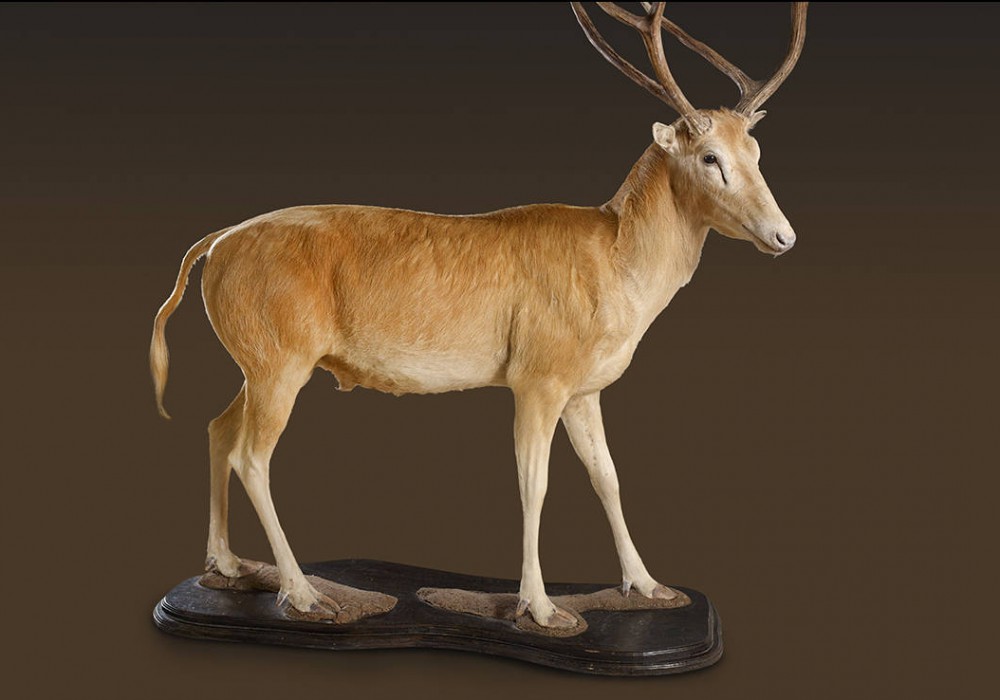Welcome to The Multilingual Museum
Here you can see Manchester Museum's objects and translate their information, talk about them, and find your own language(s). To start, can you tell us how you say 'Welcome' in a language you know?
Translate 'Welcome'
Please translate our welcome message into a language you know.
If you want more advice visit our Community Guidelines.
Coiled basket tray from 'Nubia'
Making and sharing food is one way to have a good conversation.
Come and try translating or talking about it in your language – in any way and at any level you can. For more information on this, please read our Community Guidelines.
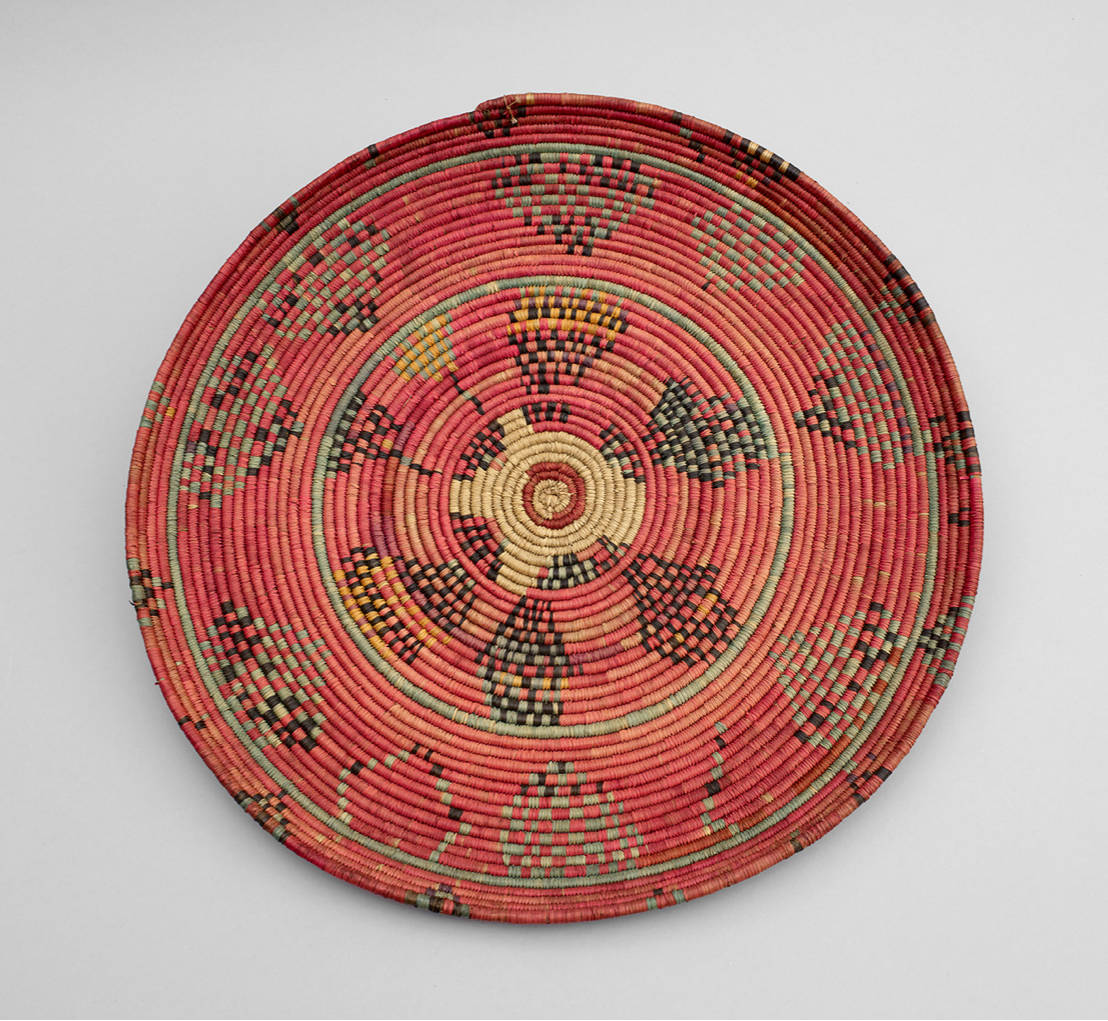
More of our Objects


This object has been translated into 6 different languages by 7 different users
The Himalayan monal is the national bird of Nepal. European natural historians often gave new names to the birds and animals they ‘discovered’ in different parts of the world. Brian Houghton Hodgson was one of the few that incorporated local names for species that were not yet documented in a European language. Examples include the…
This object has been translated into 4 different languages by 4 different users
Originally found by a British archaeologist in a Roman-period cemetery in Oxyrhynchus (modern Al-Bahnasa in Egypt), this colourful 1,700-year-old sock with split toes was made in fine 3-ply wool through the knitting method known as ‘sprang’. It was preserved for a long time due to Egypt’s dry climate. Can you share a photo or drawing…
This object has been translated into 7 different languages by 7 different users
This type of Tovil (devil) or Shanthikarma (good action) mask is used in the ancient Sri Lankan pre-Buddhist ritual of the Yakun Natima (Devil Dance). Believing that illness is caused by the curse of evil spirits, masked performers representing demonic gods dance with tha patient to hypnotic trance-inducing rhythms. The ritual combines both psychology and…
This object has been translated into 8 different languages by 8 different users
The museum has about 250 enlarged models of plants and animals. These were used to teach students in the late 19th and early 20th centuries. Many of these models can be taken apart to show the internal structure of plants and animals. They are made of papier-mâché, wood, wire and fabric. These models are still…
This object has been translated into 6 different languages by 6 different users
Old Billy was the oldest horse that ever lived, and this is his skull – he lived to be 62! He was born in 1760, and worked pulling barges along the river and lifting goods out of boats for the Mersey and Irwell Navigation Company in Warrington. After working for many years, he lived in…
This object has been translated into 6 different languages by 6 different users
Indigo was known as ‘the devil’s dye’ due to the exploitation and abuse involved in its farming and processing during British rule. The deep, intense blue colour of indigo dye and its high commercial value also led many to refer to it as ‘blue gold’. India was one of the earliest places to produce indigo…
This object has been translated into 8 different languages by 8 different users
With bright white and blue beads and cowrie shells, this belt was made by the Kuba people from the Democratic Republic of the Congo, over 100 years ago. It was made next to the Sankuru river. Cowrie shells were once used as money in this region, and so displaying them on a belt like this…
This object has been translated into 7 different languages by 7 different users
This pot containing a hoard of Roman coins was found by members of the Derbyshire Caving Club when they were blocking a mineshaft at Alderley Edge to make it safe. The coins are made from copper and date from the later Roman Empire (317-333AD). What’s the best object that you’ve ever found outside?
This object has been translated into 4 different languages by 4 different users
The Mudejar were Muslims that were permitted to remain in Spain after a Christian king conquered the Iberian peninsula. Their culture inspired an Islamic style of art and architecture with intricate repeating patterns that is still seen in many historical sites across Spain today. This bowl is from the 15th-16th century, and was found in…
This object has been translated into 6 different languages by 6 different users
This tiny teapot with a flower design is thought to be a toy, made by or for a child. It comes from the Ankole region in Uganda, where Nkole people live. For Nkole girls, making small clay pots like this, and graduating onto making clay milk pots and their lids and covers, is a rite…
This object has been translated into 6 different languages by 6 different users
This plaque was found in 2019 in a field in Oldham, in north Manchester. It is small – only 7cm tall – and it shows St. Luke sat at a writing desk, with a decoration of a bull, the symbol of St. Luke. It was likely used as a religious decoration for a Christian prayer…
This object has been translated into 11 different languages by 11 different users
Parakeets like this can now be seen in many parks and gardens around Manchester. They originally came from the foothills of the Himalayan mountains in Pakistan and India, so the cold English weather doesn’t bother them. Our UK population started in London, and has now spread to many areas of the UK. There are many…
This object has been translated into 9 different languages by 9 different users
While it is difficult to prove that objects were used as children’s toys in the modern sense, it is tempting to view this wooden model horse on wheels as such. One of several like it that are known, this horse was perhaps made in reference to the Trojan Horse, described by Virgil in the story…
This object has been translated into 8 different languages by 9 different users
At the peak of ‘Chinamania’ in the 1870s, more Mancunians had Chinese (and Chinese-style) objects in their collection than had ever been to China. These are part of a set of carved chess pieces. They are made of red and white ivory, and were made in the early 1800s for the European export market. The…
This object has been translated into 5 different languages by 5 different users
This is from a set of voter education posters used during the transformative 1994 general election in South Africa, and were donated by Professor Frank Jolles from the University of Natal. In 1994, for the first time in South African history, all citizens were allowed to vote. It was a key marker of the end…
This object has been translated into 10 different languages by 11 different users
This is Maude, a tigon. This means that she is half tiger and half lion, with a tiger father and lion mother, and she shows characteristics from both parents. In life, Maude was an attraction at Manchester’s Belle Vue Zoo, where she lived with her brother Kliou in the 1930s and 40s. Both tigons had…
This object has been translated into 10 different languages by 6 different users
One of the most beloved fossils at Manchester Museum is a Jurassic-era plesiosaur called Percy. Percy was discovered by Manchester University Students in 1960 when they were on a field trip looking for fossils. The students thought at first that they had found a common fossil called a belemnite when their lecturer, Fred Broadhurst, realised…
This object has been translated into 9 different languages by 7 different users
The variable harlequin frog is a critically endangered species being taken care of by the Vivarium team at Manchester Museum. The harlequin frogs in the Vivarium form part of Manchester Museum’s important breeding programme of reptiles and amphibians. During 2019 Manchester Museum acquired the only captive specimens of the Variable Harlequin Frog outside Panama. This…
This object has been translated into 9 different languages by 6 different users
The Manchu headdress or dianzi was given to Manchester Museum by Mrs Gertrude Wood-Jones in 1939. She was the wife of Frederic Wood-Jones FRS (1879-1954), one of the founders of modern physical anthropology. In 1932-3 Frederic was temporary director of anatomy at the Peking Beijing Union Medical College. It’s assumed the headdress was acquired at…
This object has been translated into 7 different languages by 5 different users
Manchester Museum’s 300 million-year-old fossil tree is one of the largest in the world. It has been on display in pride of place in the Museum’s Fossils gallery since the 1880s. It was discovered on 8th July 1886 at Clayton near Bradford and was described as the ‘finest specimen ever discovered’. The curators were so…
This object has been translated into 12 different languages by 8 different users
This is something very special from our collection, a dinosaur egg! This is thought to be the egg of a dinosaur called Hypselosaurus, and it dates to the Upper Cretaceous period, about 70 million years ago. Hypselosaurus (meaning ‘highest lizard’) was a titanosaur, a type of sauropod that lived in France. In 1846, Hypselosaurus eggs…
This object has been translated into 18 different languages by 16 different users
Maharajah is an Asian elephant with a fascinating story. He has inspired artwork and novels. The owners of Belle Vue Zoological Gardens bought Maharajah in 1872 from a travelling circus in Edinburgh. But Maharajah could not be persuaded to take the train, so keeper Lorenzo Lawrence walked with Maharajah on the 200 mile journey, which…
This object has been translated into 6 different languages by 6 different users
One of the most iconic objects in our Archaeology collection, this piece of broken pottery was found in an excavation in Manchester city centre in 1978. It dates from 180 AD. Back then, Manchester was a Roman settlement called Mamucium, consisting of a fort – where soldiers lived and military life was organised – and…
This object has been translated into 7 different languages by 7 different users
The giant Japanese spider crab (Macrocheira kaempferi) is the largest living arthropod in the world. In Japan, this crab is known as ‘Taka-ashi-gani’ which means ‘tall-legged crab’. The body can grow up to 40cm long, with a leg span of 3.8m and 19kg in weight! Manchester Museum’s huge Japanese spider crab was donated by Dr…
This object has been translated into 11 different languages by 9 different users
Along with many other animals, the ancient Egyptians looked on cats as personifications of deities. This object is a hollow wooden sculpture of a cat, associated with the goddess Bastet. X-rays confirmed the suspected function of this sculpture as a coffin for a mummified cat, whose complete skeleton can be seen inside the wrappings. It…
This object has been translated into 5 different languages by 5 different users
The writing on this bronze citizenship award (awarded 158 AD) says that the soldier who received it originally came from Heliopolis or Baalbek in Syria. Native people from across the Roman Empire provided soldiers to serve in the army. They were awarded Roman citizenship after serving for 25 years. Records of Roman citizenship were inscribed…
This object has been translated into 15 different languages by 11 different users
Our Herbarium has a huge collection of plants from parks & gardens. It was created by Manchester botanist, author & teacher Leopold Hartley Grindon to support his work encouraging people to take notice of the plants around them & get gardening. Like photos from a holiday, Grindon said that the ‘thousands of the specimens serve…
This object has been translated into 9 different languages by 9 different users
These carved spoons are from Somalia in Africa, made from local materials and made to last. Somali men typically carve these spoons (sometimes known as fandal or qaado) out of a plant called xagar, and they are known for their intricate geometric patterns. As well as being beautiful everyday objects, they are also sustainably sourced.…
This object has been translated into 9 different languages by 8 different users
This Roman amphora is almost 2000 years old. It was originally found in Cadiz in Spain, and was brought back to the museum as a complete example of this type of storage vessel. The pointed shape of the bottom was so that they would lie against each other securely when stacked. It is useful to…
This object has been translated into 5 different languages by 5 different users
Moccassins are a type of shoe from the native people of the Americas, usually made from deer leather to fit the size and shape of the wearer’s foot, and often decorated with beads or thread. There are many different styles and designs for each of the native American ethnic groups in this part of the…
This object has been translated into 14 different languages by 13 different users
Repairing broken things is a good way to keep them for a long time, without needing to buy new. Japan is particularly famous for this, with a technique for repairing broken bowls called ‘kintsugi’. Gold is poured into the cracks and chips, making a beautiful feature out of the wear and tear the object experiences.…
This object has been translated into 6 different languages by 6 different users
These are the seeds of the oil palm, which is where we get palm oil. Oil palms are grown in many countries in Africa and Asia, but are often grown on land that was formerly rainforests – rainforests are an important carbon sink, wildlife habitat, and home to Indigenous people, but are burned to make…
This object has been translated into 9 different languages by 8 different users
Carrying and storing water will become more and more important as the weather globally becomes hotter and droughts become more frequent. This will be important not just for farming, but also to maintain human health – in unusually hot conditions, staying hydrated is vital. This is an example of a water vessel from Borneo, where…
This object has been translated into 6 different languages by 6 different users
As snow is white and shiny, it has a strong reflective quality, meaning the sun that reflects off the surface of the snow can be blinding if care isn’t taken to protect your eyes. These are snow goggles designed by Inuit people to shield the eyes from this bright light and let them walk outside…
This object has been translated into 10 different languages by 9 different users
Polar bears are the largest land carnivore on Earth. They can weigh up to 700kg and be up to 3m long. They are found around the North Pole, and spend most of their year on floating icebergs to hunt seals. As sea temperatures rise and the ice in the polar regions begins to melt, polar…
This object has been translated into 12 different languages by 13 different users
Manchester Museum has been working with artists and communities to make a rickshaw to display in the South Asia Gallery. Rickshaws are a major form of transport in many countries in Asia, and are often brightly decorated like this. Rickshaws, like bicycles, do not need petrol to run, as they are pedal-powered and a green…
This object has been translated into 10 different languages by 11 different users
This is a piece of melted metal and glass from the 1945 bombing of Hiroshima. In World War II, atomic bombs were made and dropped on two Japanese cities, Hiroshima and Nagasaki, killing at least 100,000 people, mostly civilians. Nuclear power to generate energy comes from the same process. Nuclear power plants are thought by…
This object has been translated into 8 different languages by 8 different users
For a fossil to form it requires special conditions. The original organic matter (e.g. animal or plant) must be in conditions where it doesn’t completely rot down, which often means an environment with no oxygen such as in a bog. Once there, the mud around it will turn to rock over time, and the minerals…
This object has been translated into 7 different languages by 8 different users
Crude oil is one of the world’s most commonly used energy sources. Wars have been fought over it, and the supply and demand for oil continues to cause conflict in many parts of the world. It is also a non-renewable resource, meaning that once it is used up, there will be no more, and it…
This object has been translated into 10 different languages by 10 different users
Bats often appear at night, and this is seen in different ways in different parts of the world. In some places such as Eastern Europe they are associated with vampires, who can shift forms and suck blood from humans, while in other cultures such as Japan they are seen as being good luck and have…
This object has been translated into 15 different languages by 17 different users
Ask people what the most important drink in their culture is, and many will say ‘tea’. Tea originally came from East Asia but has spread across the world, with distinctive varieties and ways of drinking tea becoming a point of pride for many countries – karkadeh from Egypt which is made bright red with rose…
This object has been translated into 12 different languages by 12 different users
Bees are the symbol of Manchester. Due to their hardworking nature, they came to represent the city during the industrial revolution. Bees are important in the mythology of many cultures. For example, in many European countries, there is an old tradition of ‘telling the bees’ where the bees would need to be informed of any…
This object has been translated into 7 different languages by 7 different users
The mountain in this lantern slide image, which is an old way of showing photographs or other images, is known in English as ‘Adam’s Peak’. It is best known for the ‘Sri Pada’ or sacred footprint, a 1.8m rock formation near the summit that is claimed by many religions as being the footprint of an…
This object has been translated into 8 different languages by 8 different users
Monarch butterflies are famous for their extraordinary migration of nearly 3000 miles. Every year, in one valley in Mexico, the trees are filled with these butterflies spending the winter in the protected conditions of the valley. As the climate changes, the weather in the valley is also changing, which poses a risk to these butterflies…
This object has been translated into 8 different languages by 9 different users
As you may have noticed, this beetle has a beautiful rainbow colour to its shell. It is usually known as either the Snowdon leaf beetle, after the mountain in Wales, or the rainbow leaf beetle due to its colours. Mountain species like these are at particular risk from the changing climate, as they move further…
This object has been translated into 5 different languages by 5 different users
Sand eels are a very important food source in UK seas. They are a major part of the diet for seabirds like puffins, larger fish like mackerel, and even mammals like the harbour porpoise. Sand eels swim in large shoals between April and September, and spend the autumn and winter months buried under the sand,…
This object has been translated into 8 different languages by 9 different users
This seaweed was discovered in 1855, and was last collected in 1886 in Port Jackson, near Sydney, Australia. Since then there has been no sign of the seaweed, and it is now thought to be extinct. Human activities stirred up the silt in the area, and fine algae like this are very vulnerable to the…
This object has been translated into 10 different languages by 11 different users
Making and sharing food is one way to have a good conversation, and share our successes and worries with one another, celebrate, and even talk about difficult subjects. This is a basket tray for serving food at a gathering, made from coiled dyed plants to make this colourful pattern. This example is listed as being…
This object has been translated into 11 different languages by 11 different users
Birdsong is an easily accessible way to connect with nature. Even when you can’t see birds, you can hear them all around you in the spring as they sing to mark their territories and attract a mate. Birds all have their own unique calls, and the nightingale song is famous for being beautiful. Is there…
This object has been translated into 18 different languages by 20 different users
Lavender is a plant well known for its calming properties and gentle scent. The purple flowers of a lavender plant can be dried and kept to encourage more restful sleep. When the Ancient Egyptian pharaoh Tutankhamun was buried, he was buried with lavender that still had a scent when his coffin was opened in 1922,…
This object has been translated into 8 different languages by 8 different users
This is a mortar, used with a pestle for grinding food like peanuts into peanut butter. It comes from Zambia, in Africa. Peanut plants are very sensitive to drought, and are one of our familiar foods whose supply may be badly affected by climate change, which means that peanut butter may one day become more…
This object has been translated into 6 different languages by 6 different users
This is a game trap from Uganda, in Africa. Acacias are trees that have thorns to deter animals that may eat the tree, and these thorns have then been used by humans in traps like this one to catch animals. Eating meat is something that is normal in many areas of the world while in…
This object has been translated into 14 different languages by 14 different users
Cooking is an important part of life for people across the world. This is a medieval cooking pot, found near London in the UK. It has three legs for standing over the ashes of a fire. By analysing traces of food found in cooking pots like these, it’s possible to find out what types of…
This object has been translated into 17 different languages by 18 different users
Chillies are an important spice we can add to our food. Different cultures preserve and store chillies in different ways, such as by drying them on roofs, keeping them in oil, or even freezing them, and for many cultures spice tolerance is a point of pride. How do you feel about chillies?
This object has been translated into 12 different languages by 12 different users
This illustration is from the Leo Grindon collection, which is a collection of different specimens and illustrations from many different sources. Leo Grindon’s particular interest was plants grown in gardens and greenhouses, and he built up a large collection of over 40,000 specimens. He did pioneering work in adult education amongst the working classes in…
This object has been translated into 9 different languages by 9 different users
Creswell Crags is a historical site near Sheffield in the UK. The people that lived there 50-60,000 years ago were known as 'climate migrants' - they moved with the seasons, and would leave behind objects to return to in fairer weather.
This object has been translated into 12 different languages by 15 different users
This is the Eye of Horus, sometimes known as the wedjat eye, used as a popular symbol of protection in Ancient Egypt. The god Horus is represented as a falcon.
This object has been translated into 10 different languages by 14 different users

